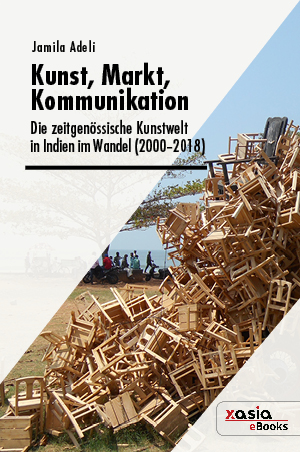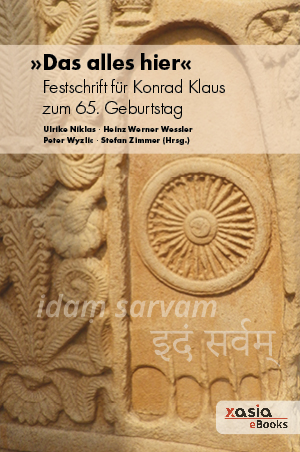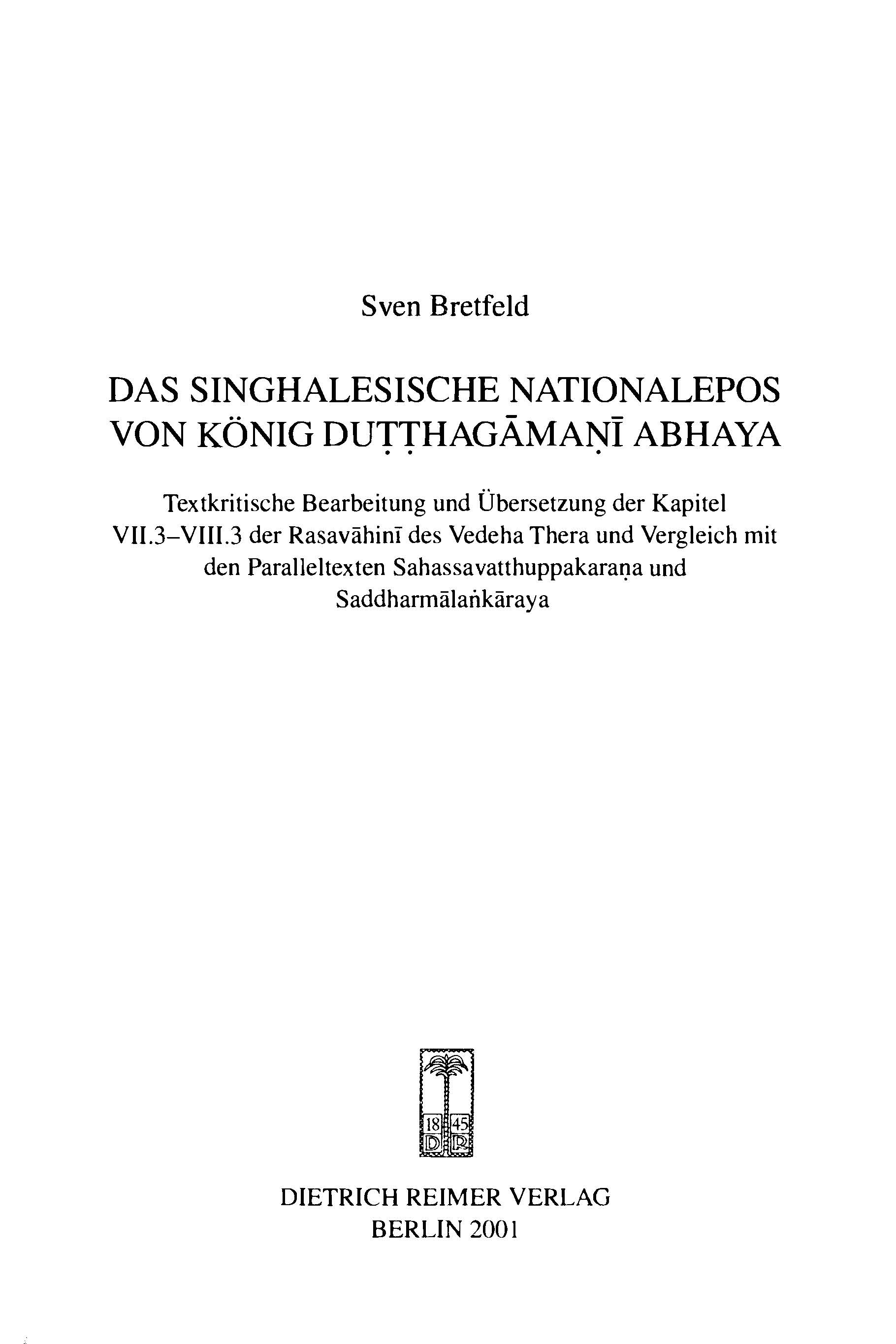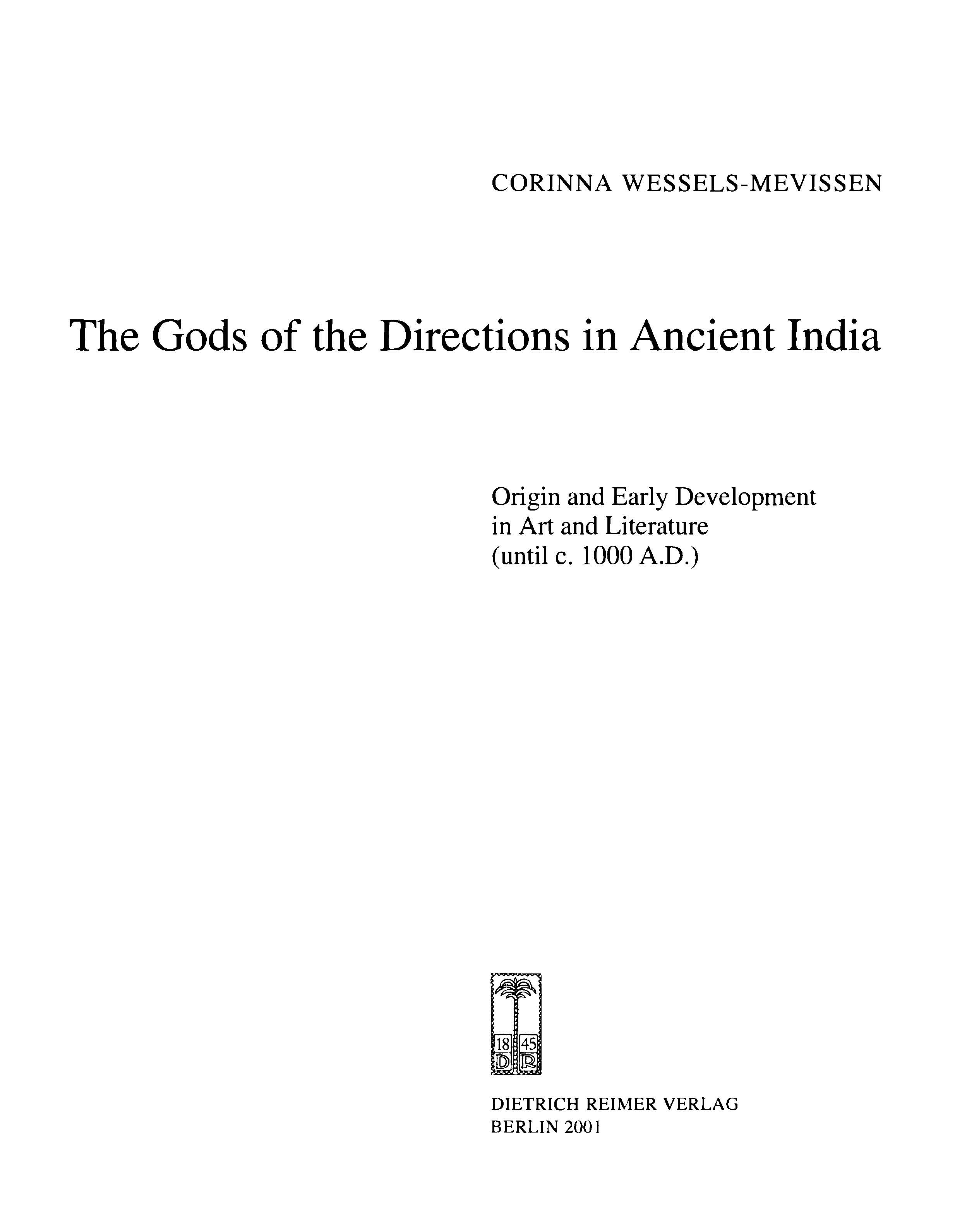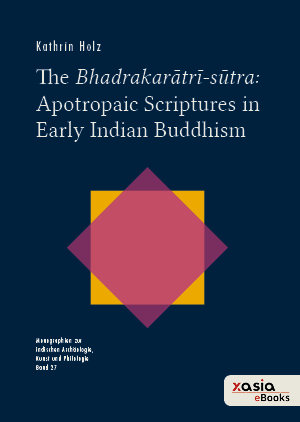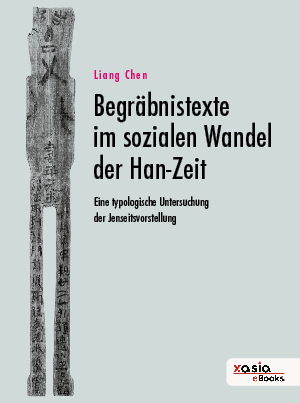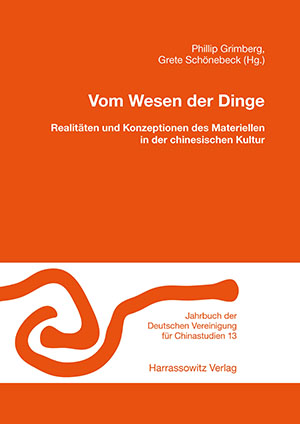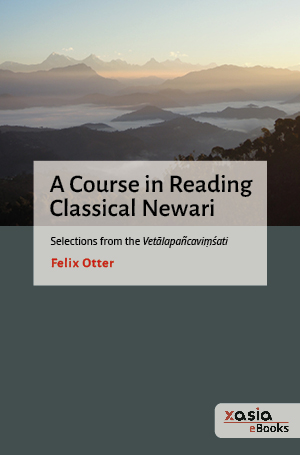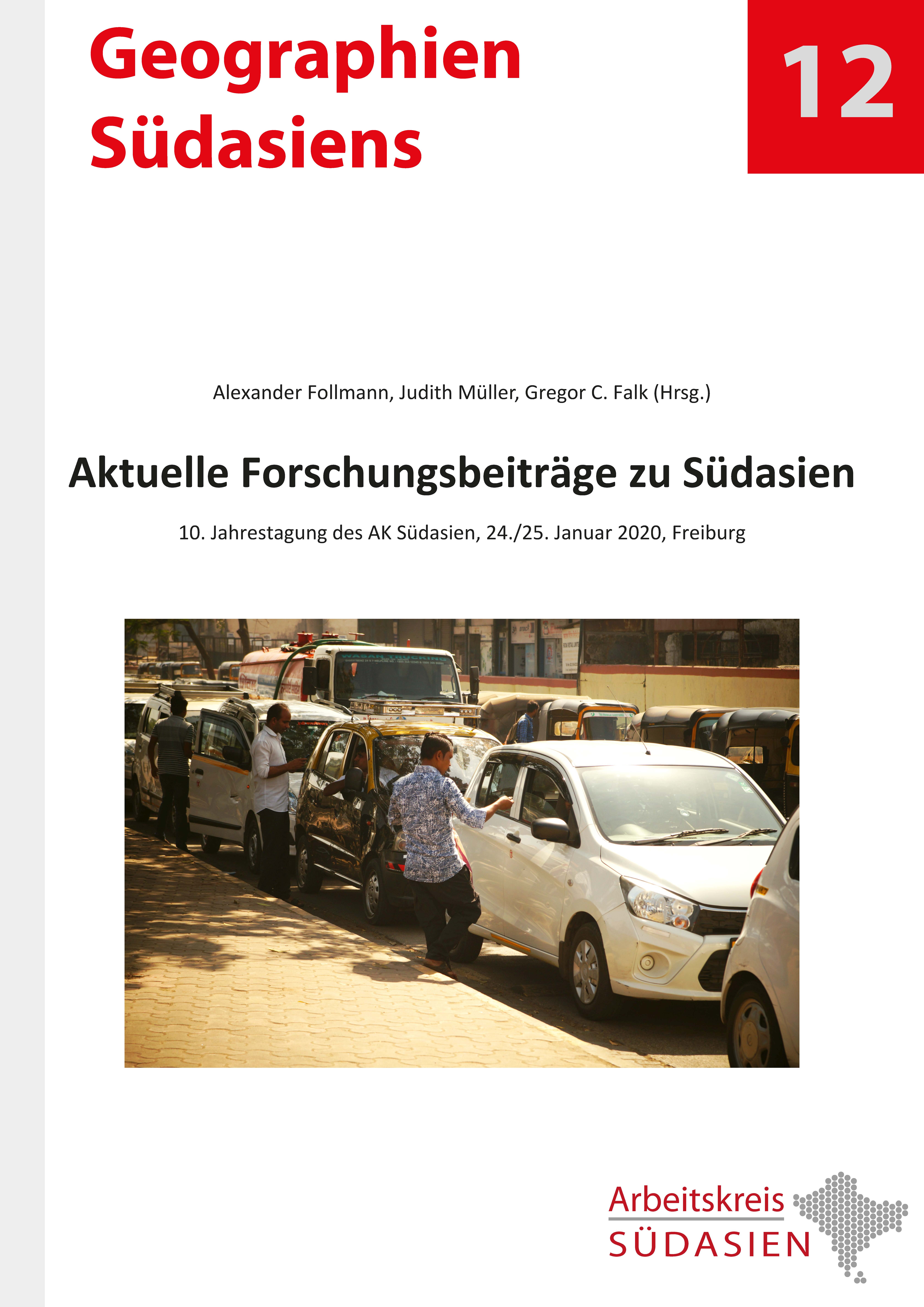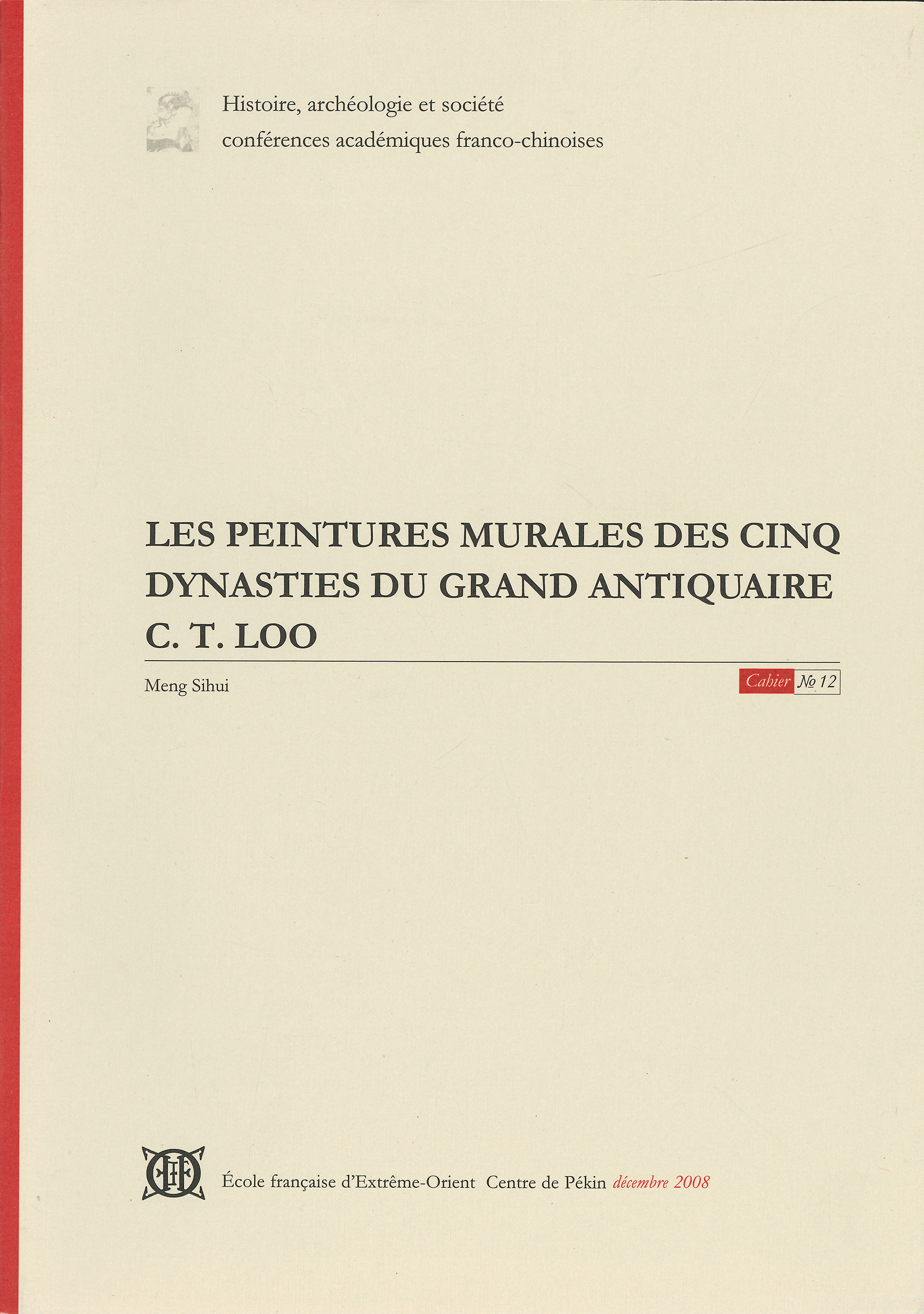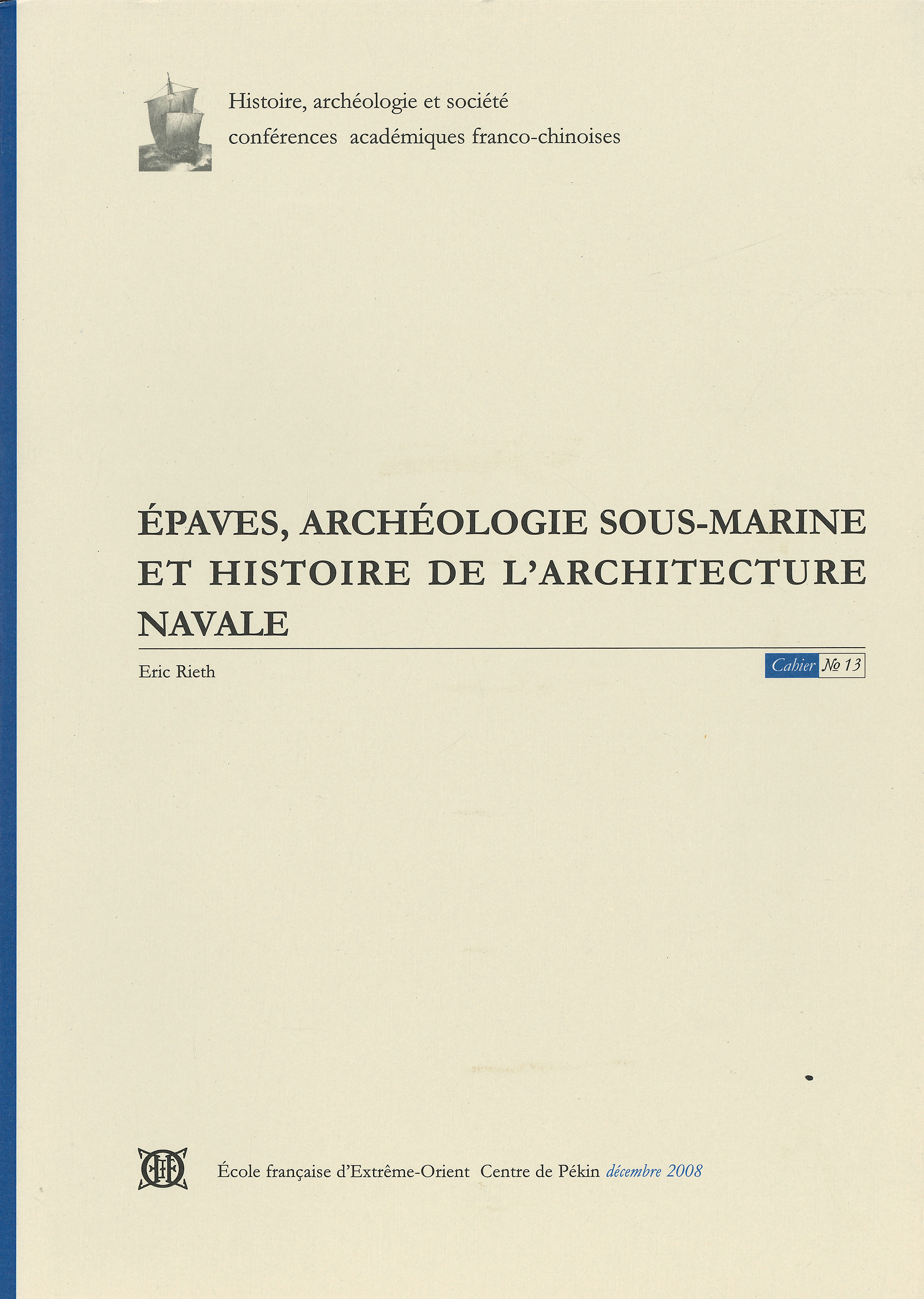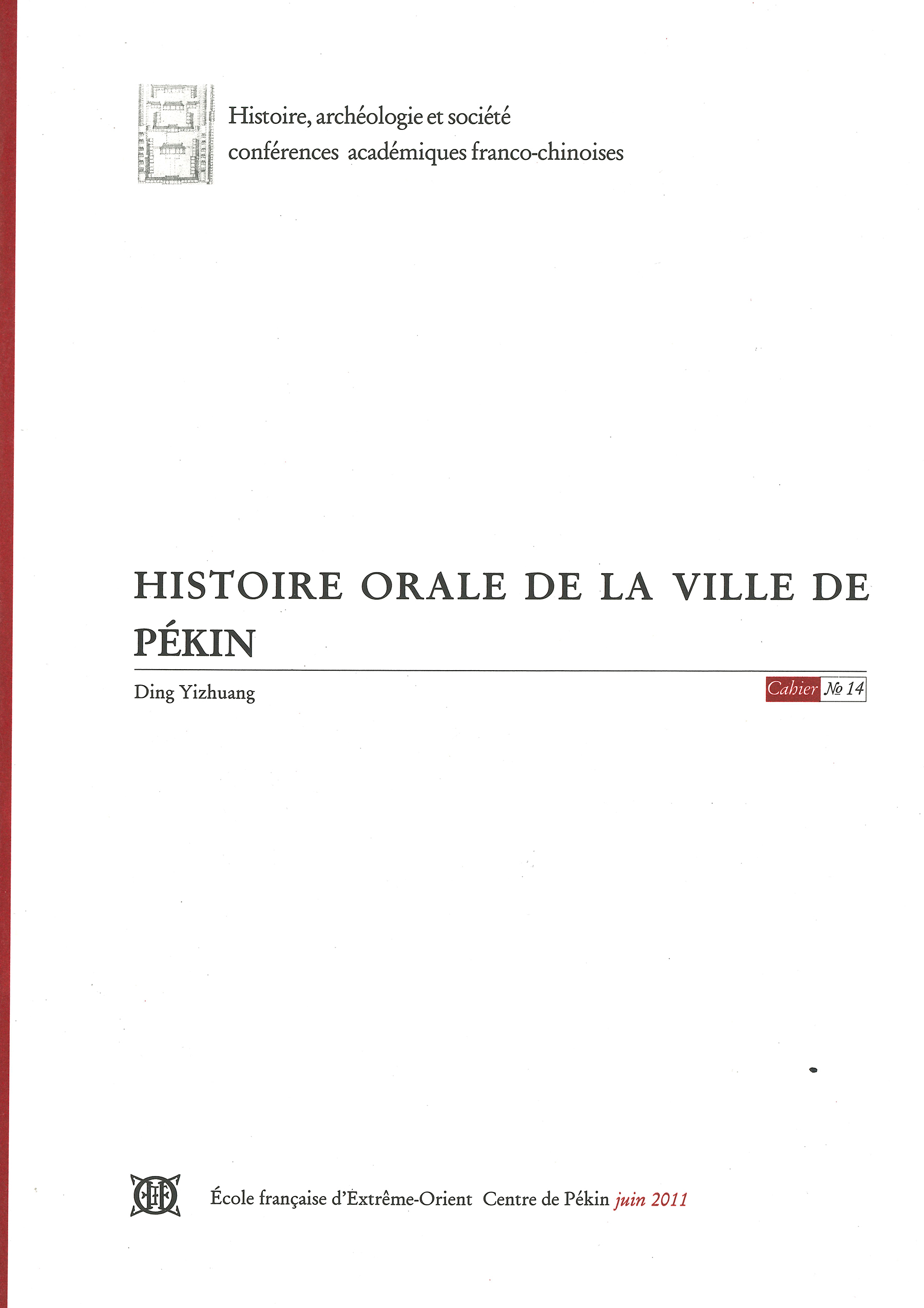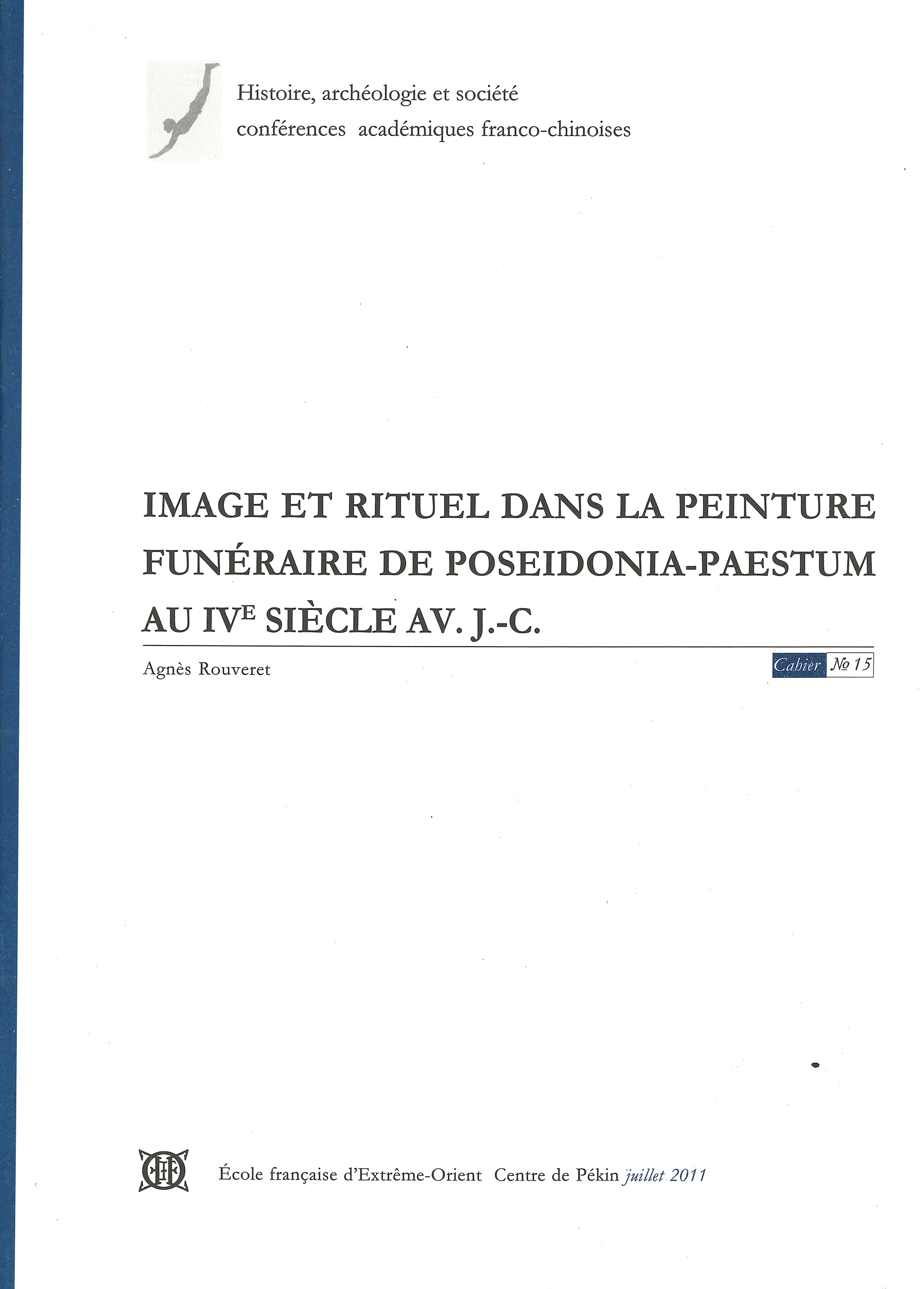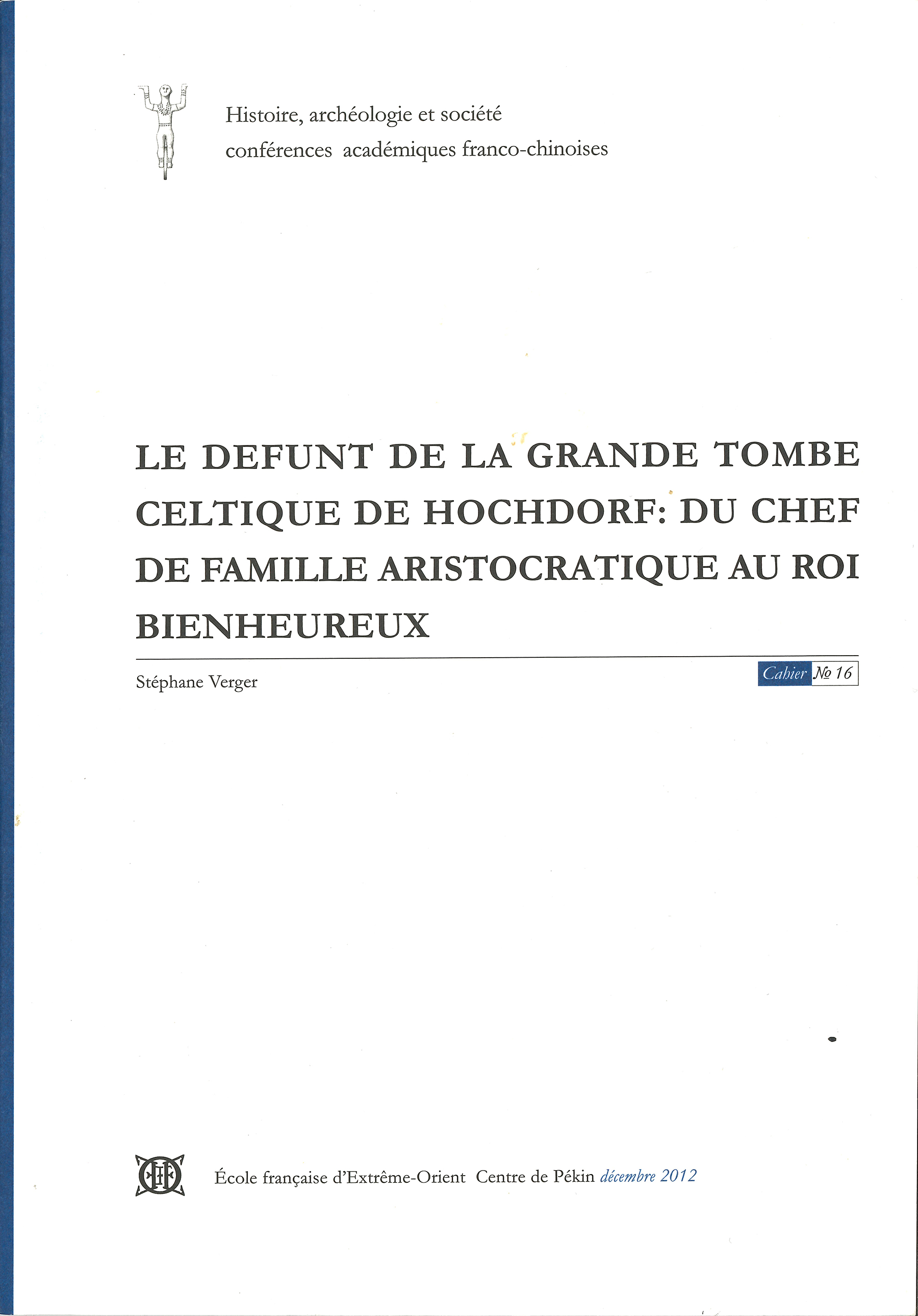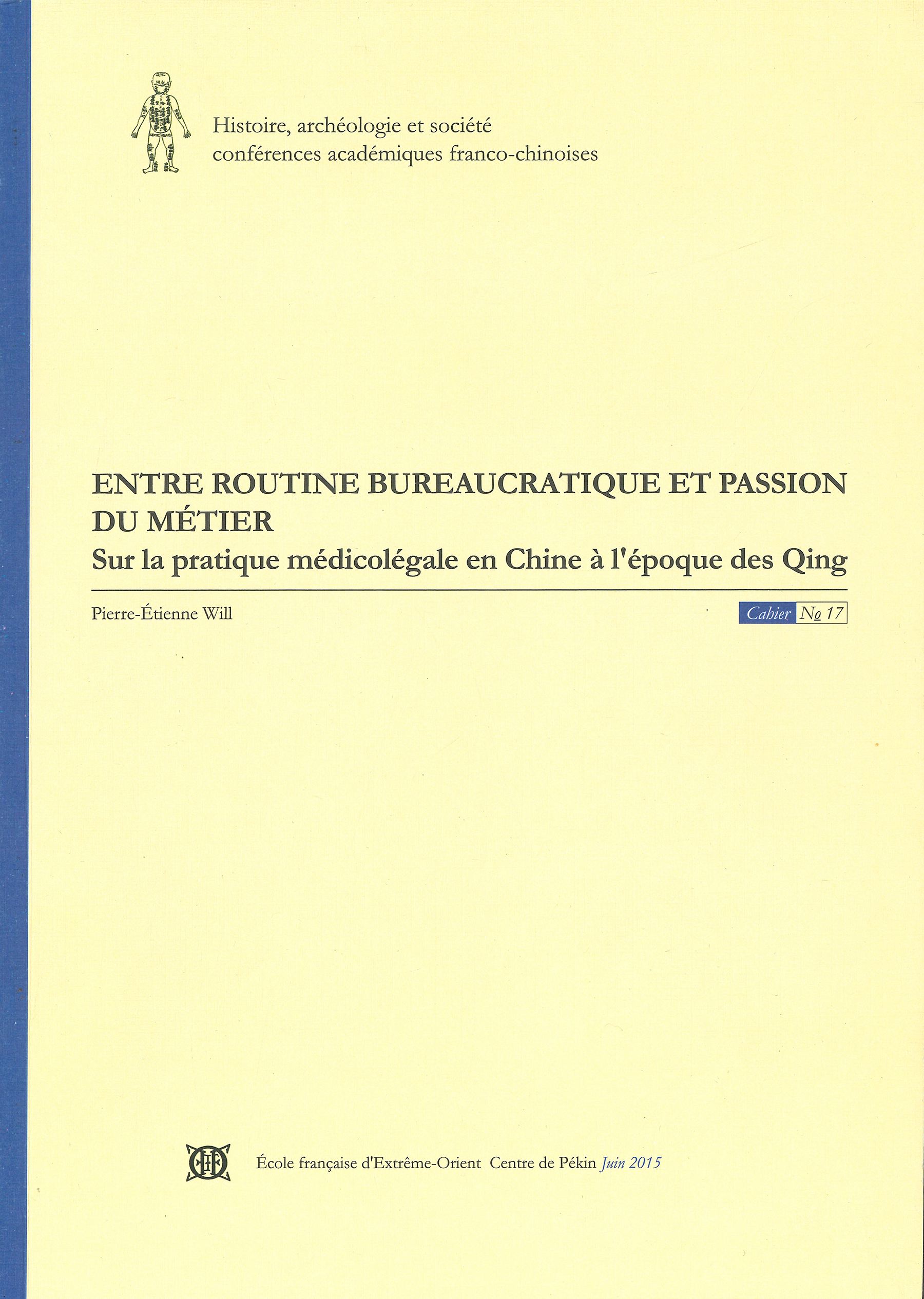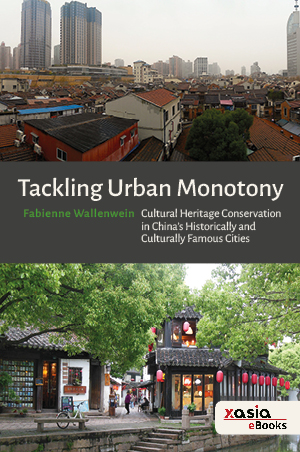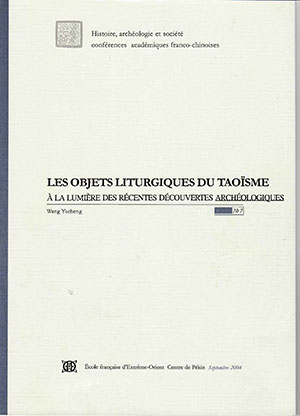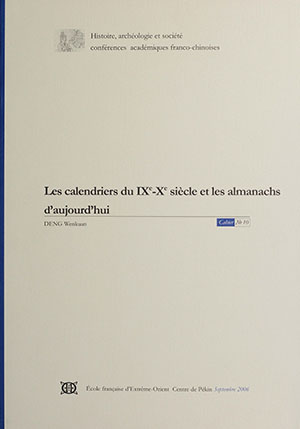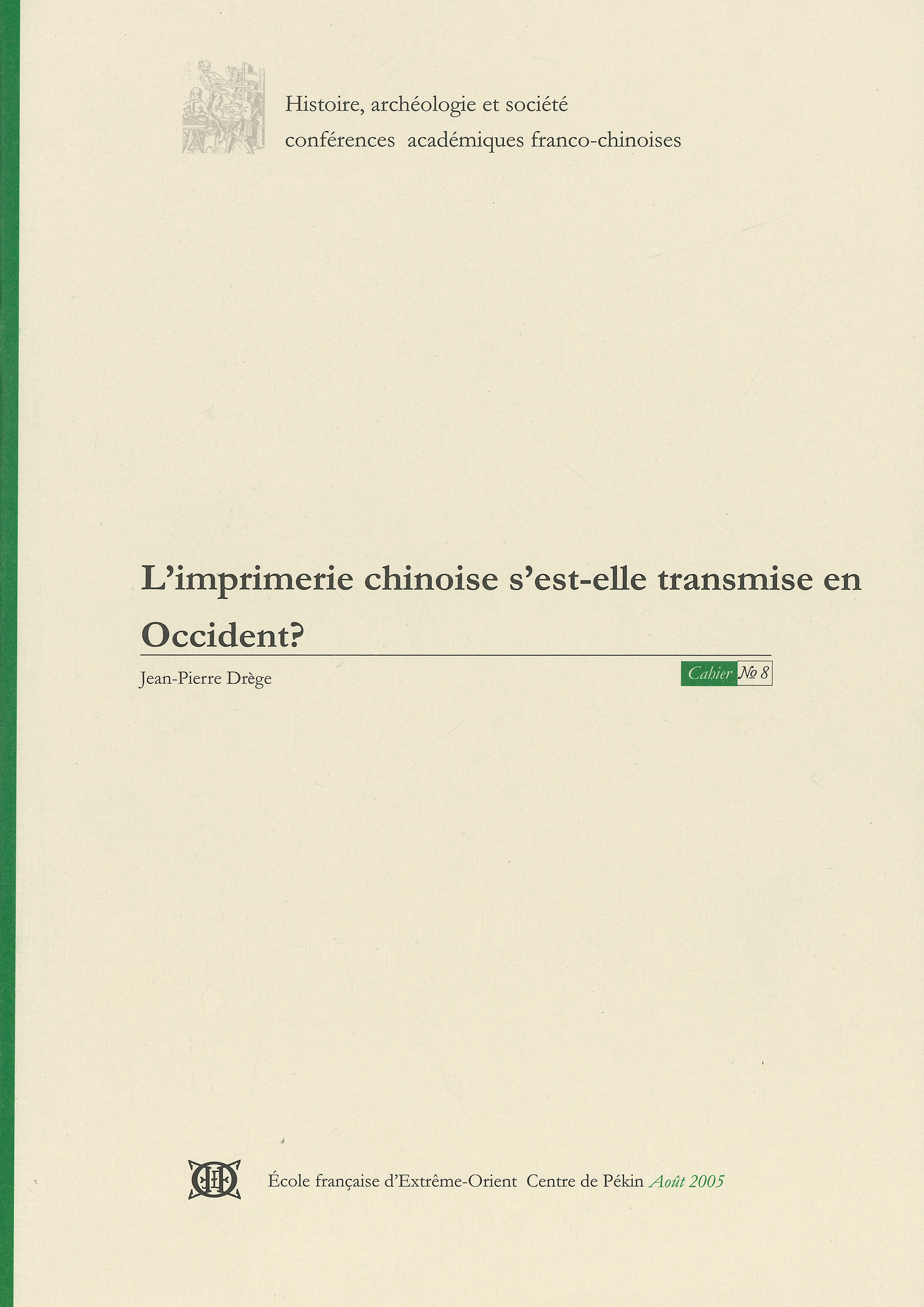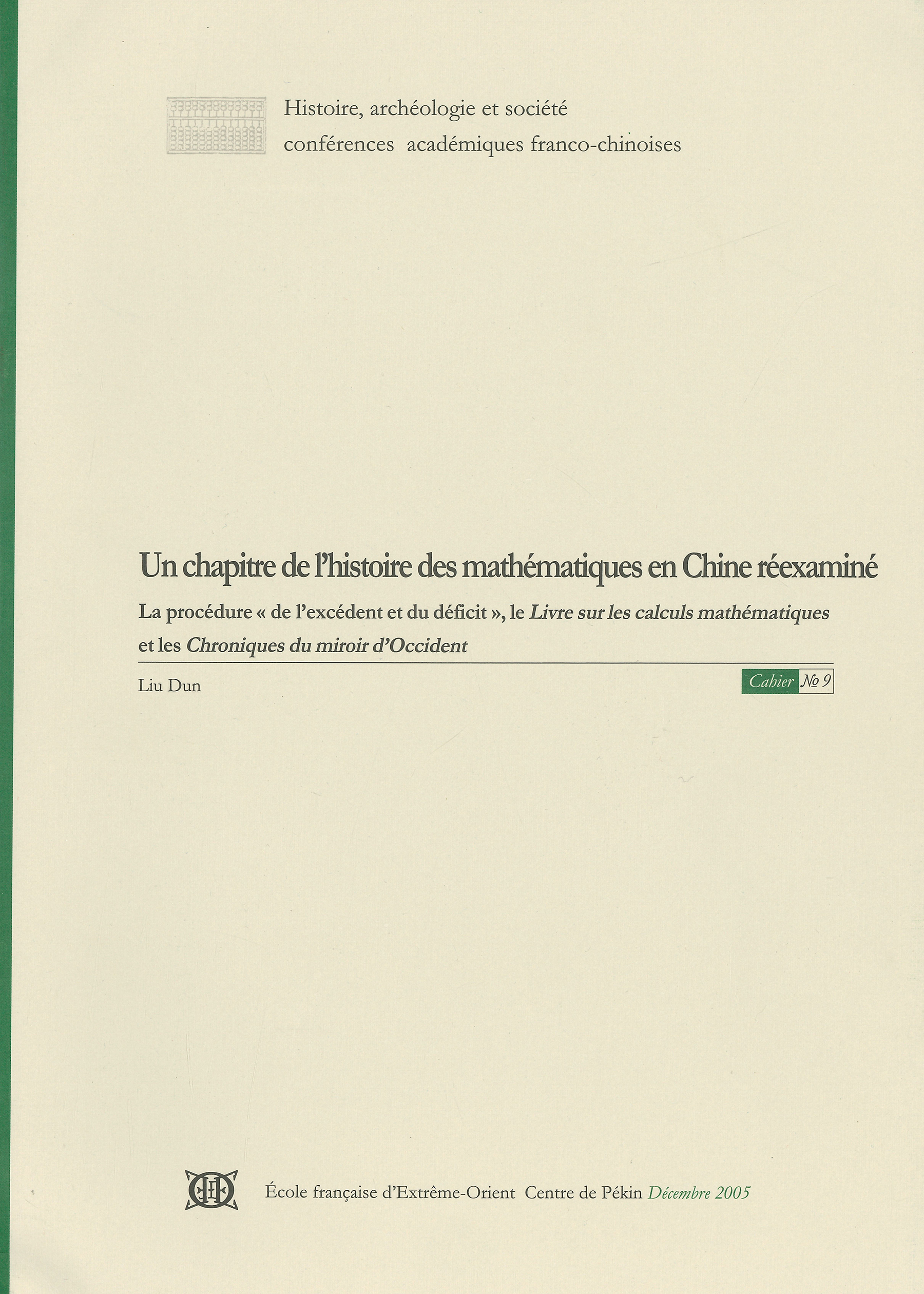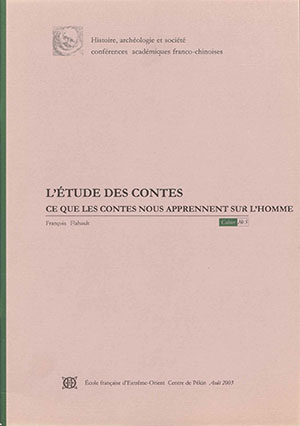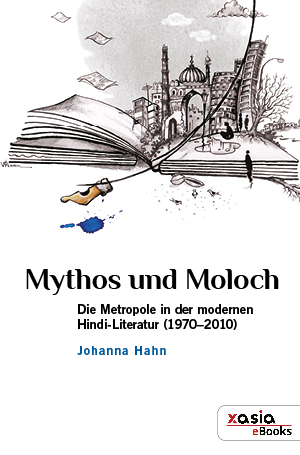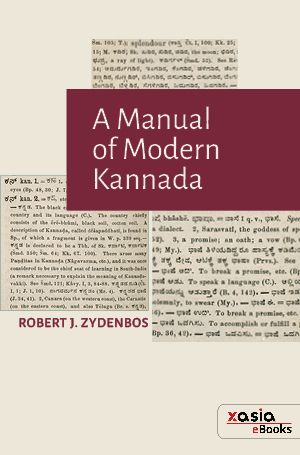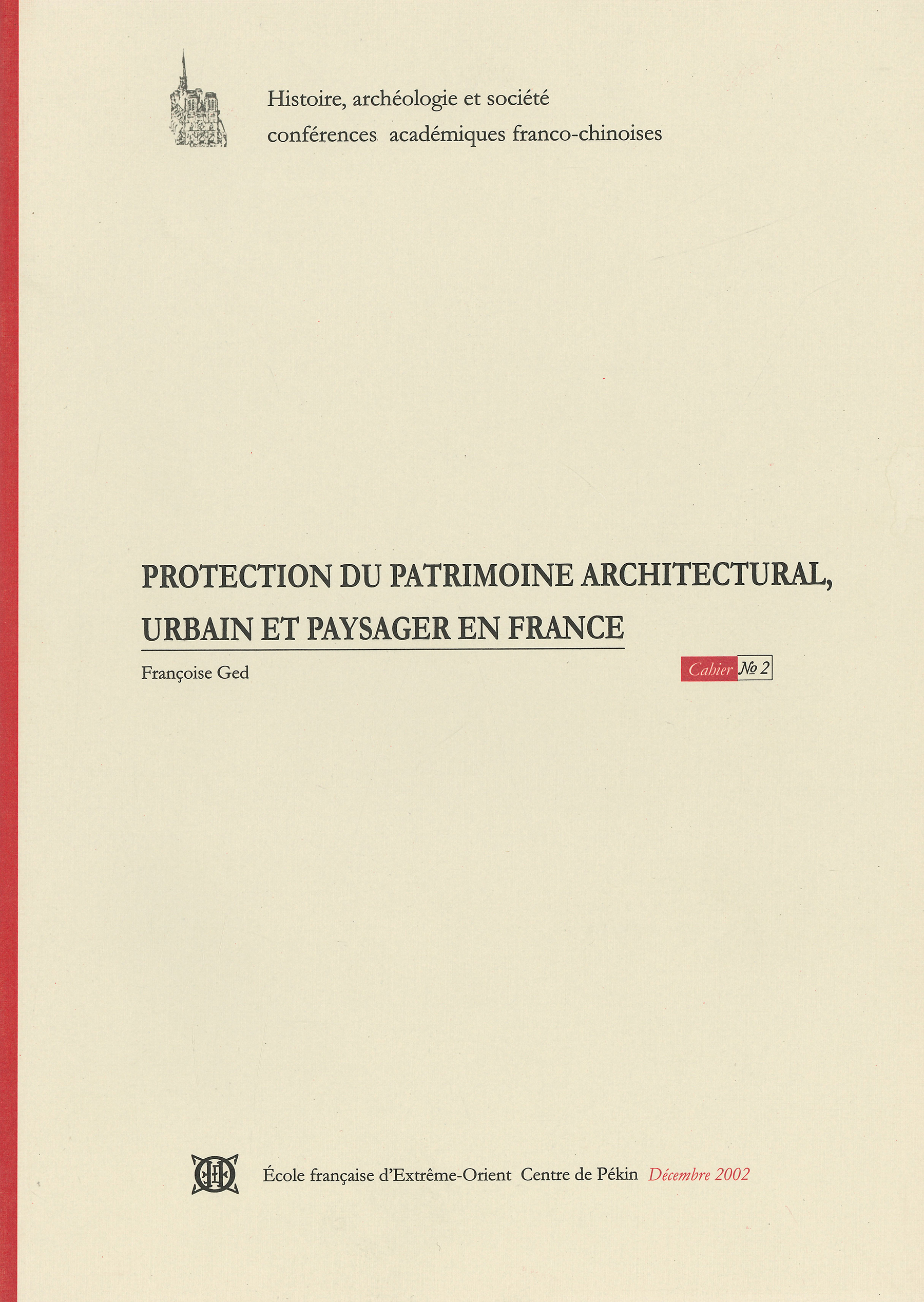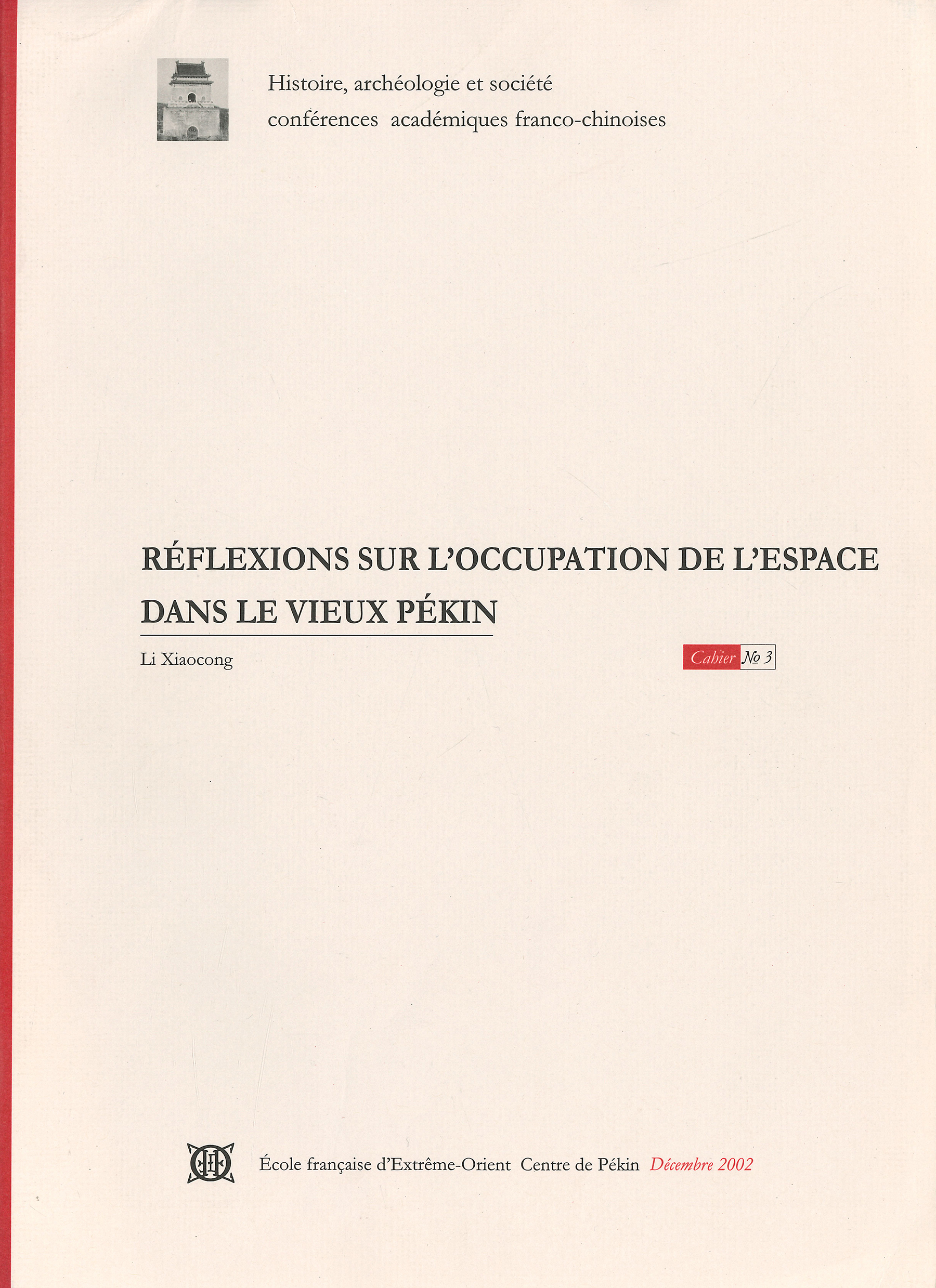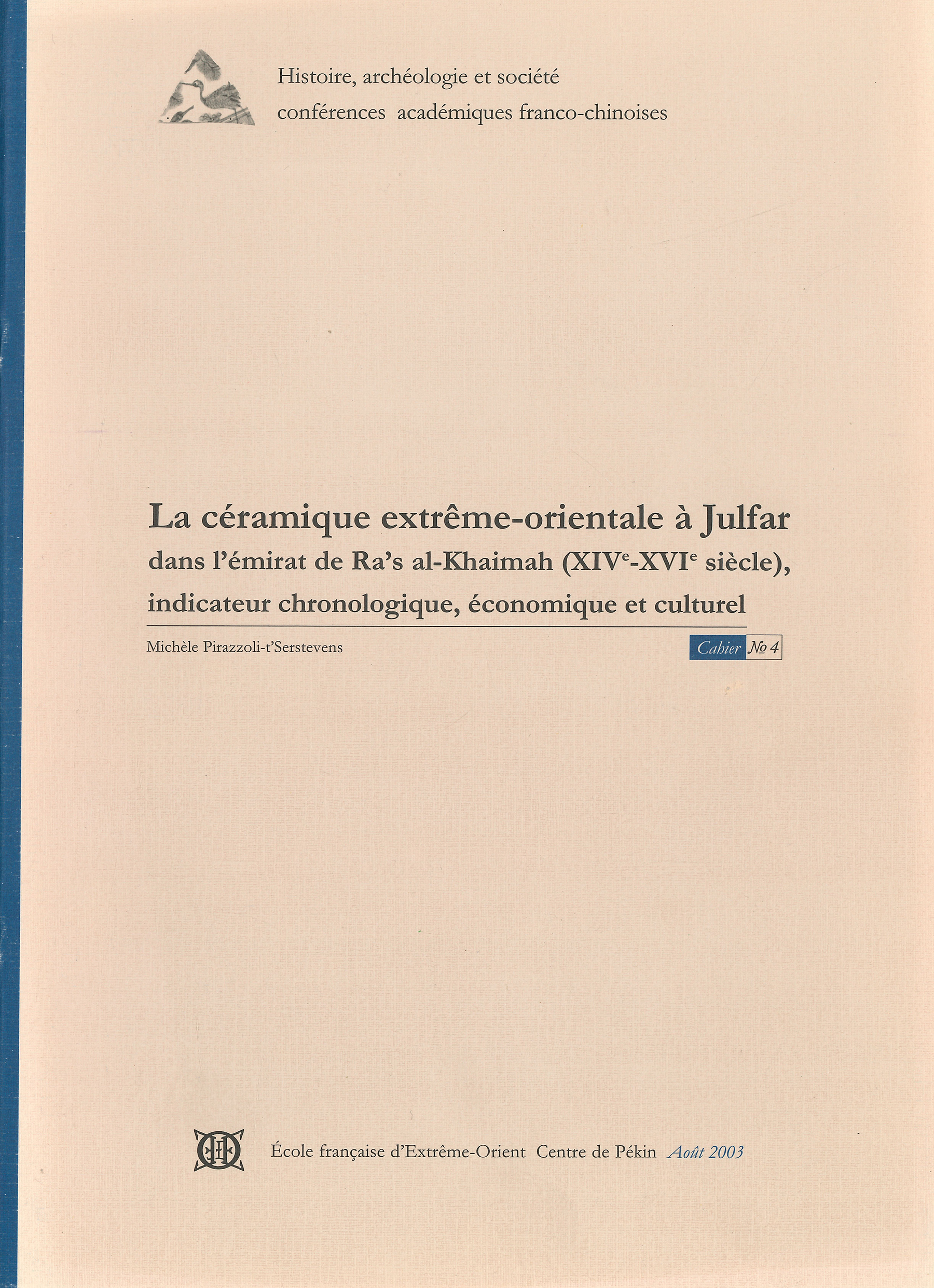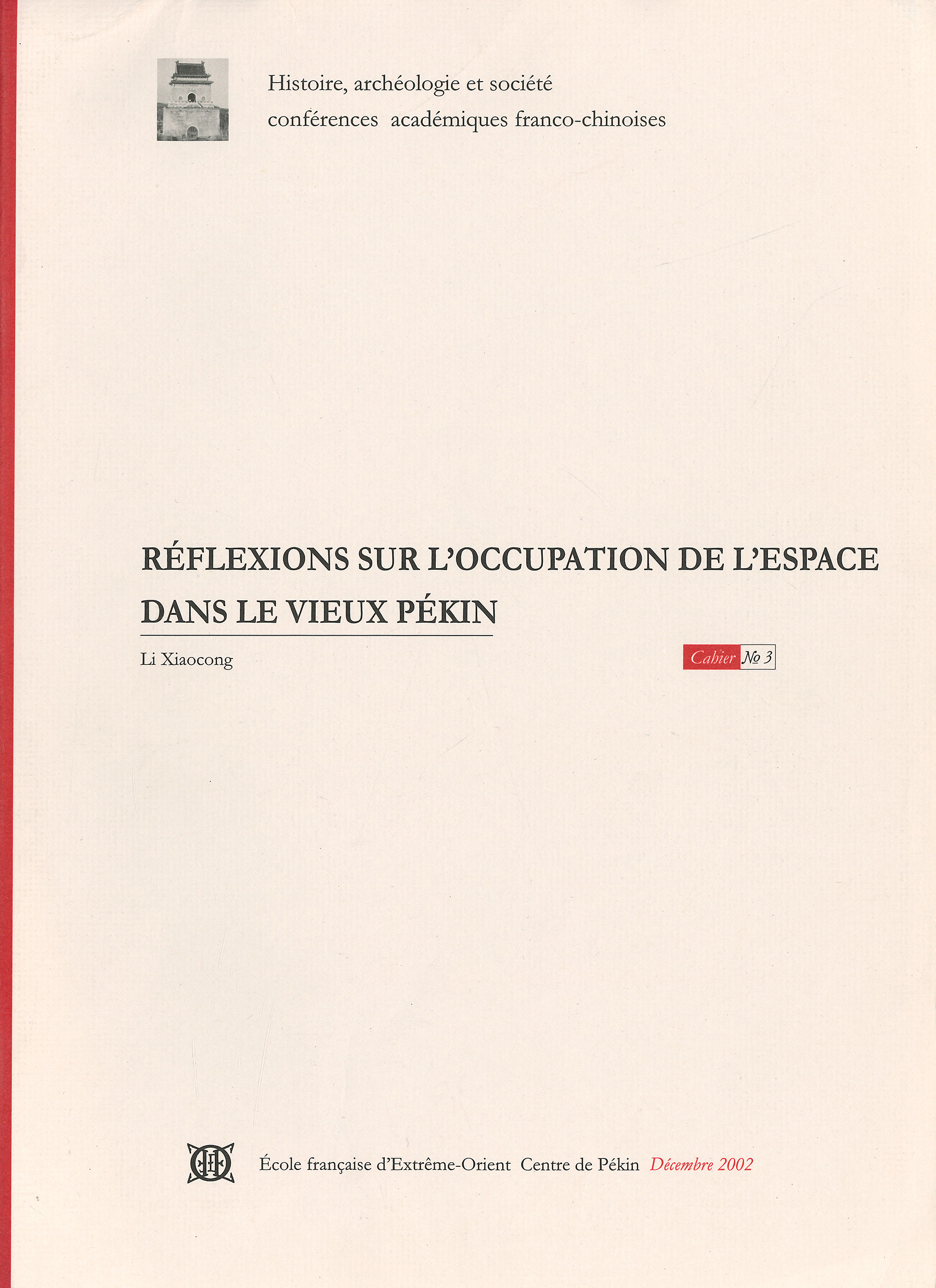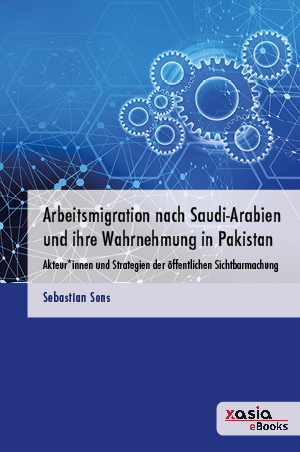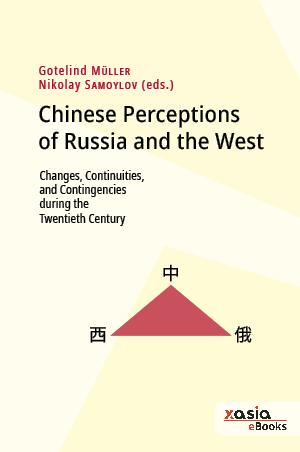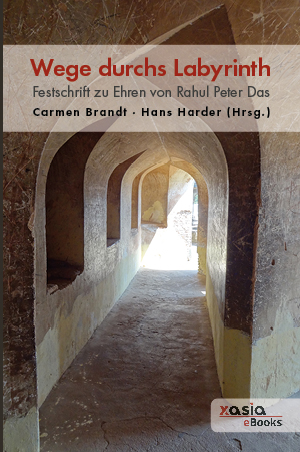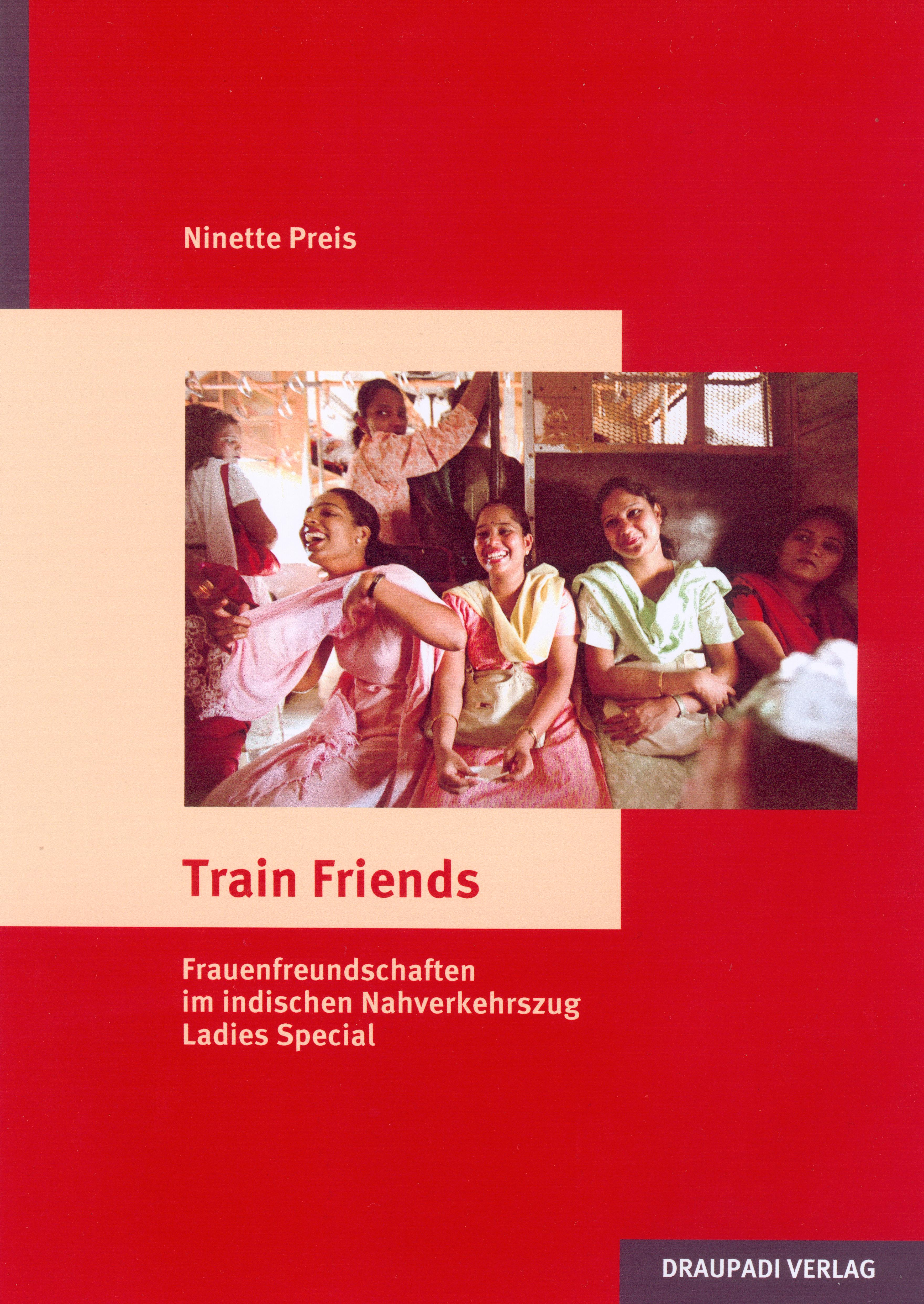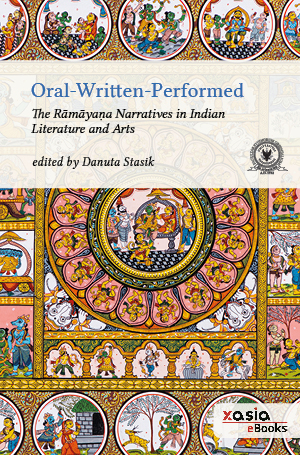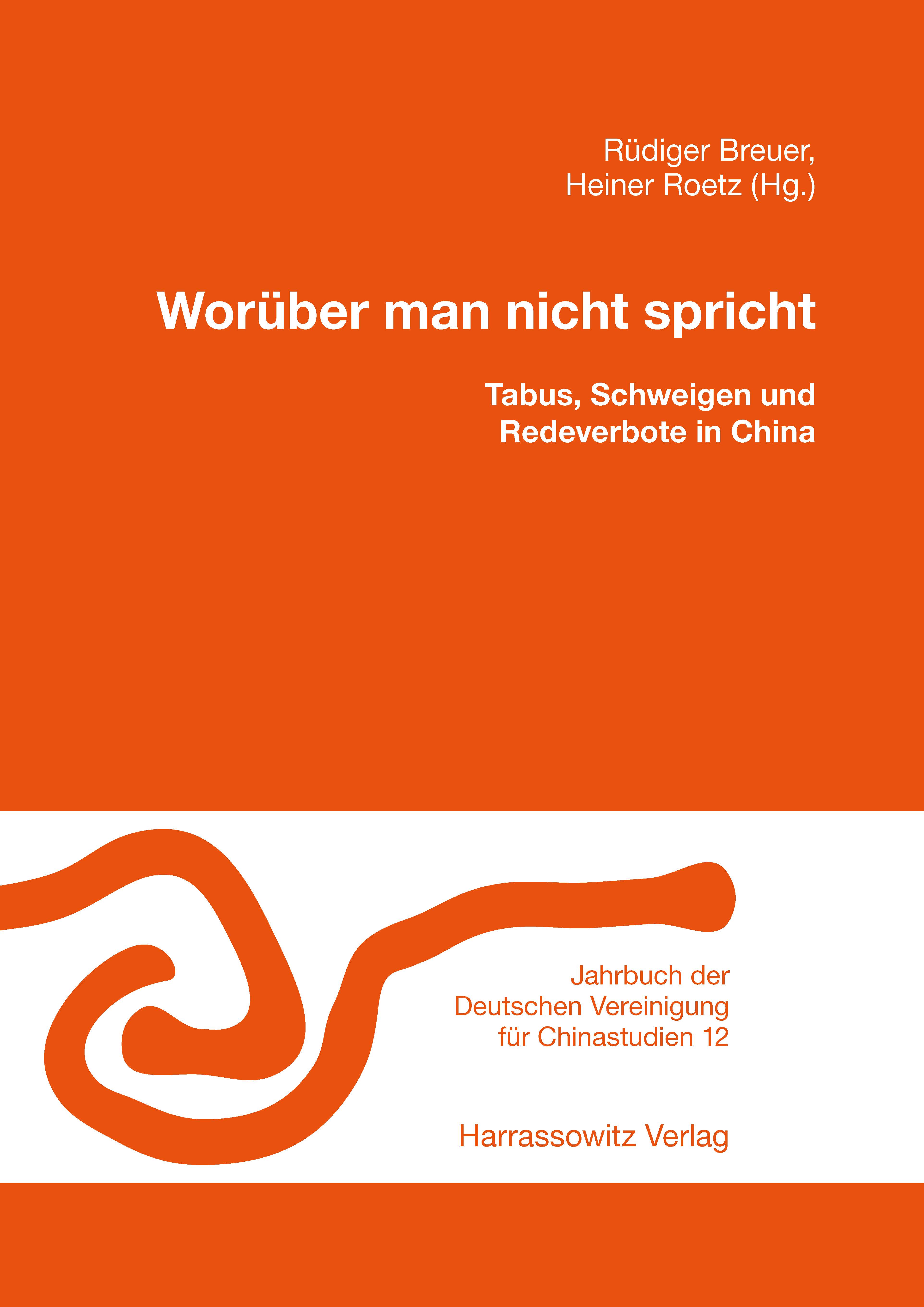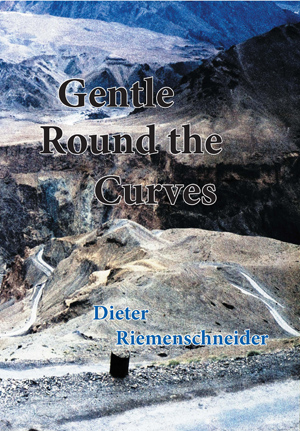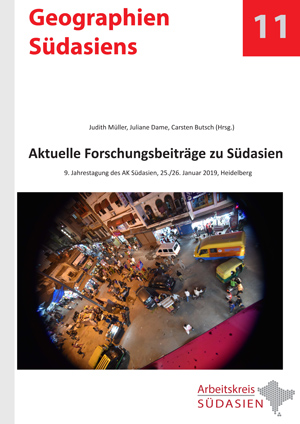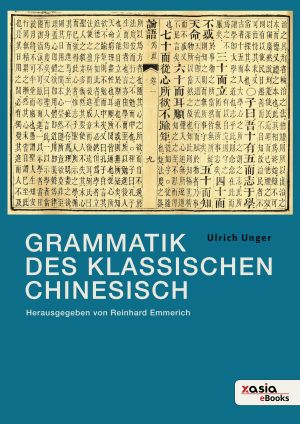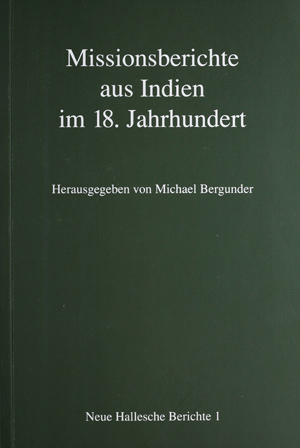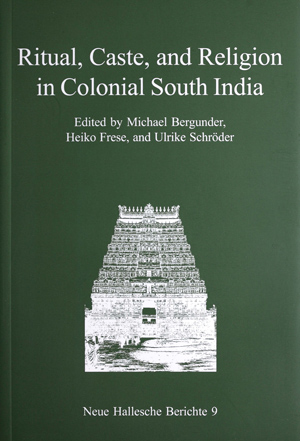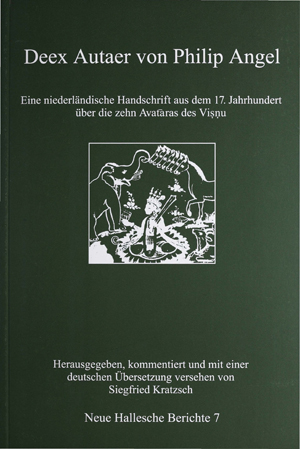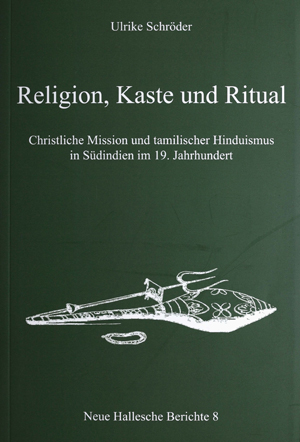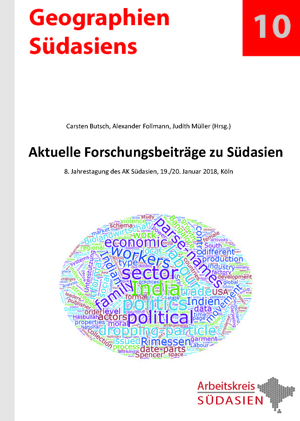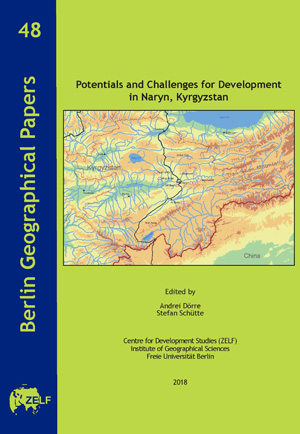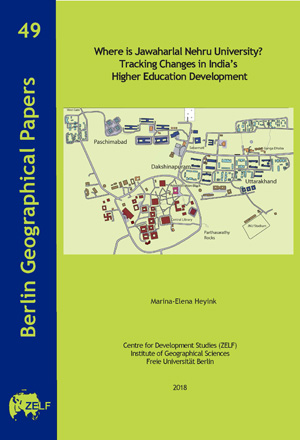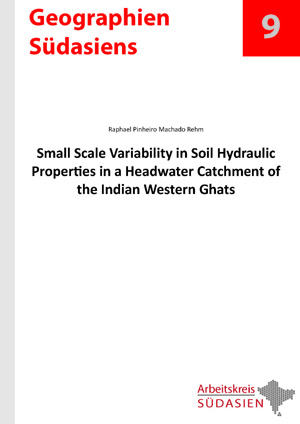Books
Kunst, Markt, Kommunikation: Die zeitgenössische Kunstwelt in Indien im Wandel (2000-2018)
Contemporary visual art has long since ceased to take place only in Western art centres. In particular, "emerging art markets" such as India or China, with their aspiring middle and upper classes, have increasingly attracted the attention of the global art field since the beginning of the 2000s. However, these art markets do not simply fit into the Western art establishment, but differentiate themselves into (trans)local art fields. This book traces how (trans)local art institutions, knowledge spaces and resources have evolved in India between 2000 and 2018 and suggests that the transformation of the contemporary art world in India can be understood as a decided process of localisation. Based on the India Art Fair, the Kochi-Muziris-Biennale and the positioning and practices of local art actors in Mumbai, Delhi and Kochi, a new self-understanding of the art-interested Indian society becomes visible, which increasingly leads to emancipation from Western art centres.
Die Vorschriften für die buddhistische Nonnengemeinde im Vinaya-Piṭaka der Theravādin
The ordination tradition of the nuns of the Theravāda Buddhist school probably ended towards the end of the first millennium AD. Nevertheless, the rules of conduct for nuns, which, like those for monks, are regarded as Buddha's word, continue to be handed down in the collection of canonical texts. In the present study, the set of rules for nuns of the Theravāda tradition is presented starting from the special nuns' rules in the Book of Religious Discipline (Vinaya-Piṭaka) and the relevant commentary passages in the Samantapāsādikā, and compared with the rules of conduct for monks of the same tradition. This work is a revised version of the dissertation accepted in 1995 by the Department of Historisch-Philologische Wissenschaften at the Georg-August University in Göttingen.
»Das alles hier«: Festschrift für Konrad Klaus zum 65. Geburtstag
»Das Weltall, die Gesamtheit des in der Welt Vorhandenen, wird in den Brāhmaṇas gewöhnlich mit dem Ausdruck idaṃ sarvam ›das alles hier‹ bezeichnet…«, reads Konrad Klaus' doctoral thesis Die altindische Kosmologie (1986). The completion of his 65th year – at the same time the completion of two decades as a university professor in Bonn – is a welcome occasion for us to honour Konrad Klaus with this Festschrift. »Das alles hier« may gladly also be interpreted in terms of the honoree's life's work to date: A rich academic work with multiple activities in teaching, research and science management with a large number of brilliant publications on philological and cultural-historical issues as visible signs. Konrad Klaus has a worthy place in the scholarly tradition of Indology, which began in Germany with the establishment of the first chair dedicated to Indian philology at the newly founded University of Bonn in 1818. It would be mistaken to think that the 200th anniversary in 2018 was a kind of early funeral. The transition to South Asian Studies with a renewed profile is part of the life's work of Konrad Klaus, who, although himself a classical Indologist, fully supported and benevolently accompanied this reorientation.
Das singhalesische Nationalepos von König Duṭṭhagāmaṇī Abhaya: Textkritische Bearbeitung und Übersetzung der Kapitel VII.3-VIII.3 der Rasavāhinī des Vedeha Thera und Vergleich mit den Paralleltexten Sahassavatthuppakaraṇa und Saddharmālaṅkāraya
An in-depth exploration of the authoritative "medieval" treatment of the material of the Sinhala national epic - in Pāli as the largest coherent collection of narratives in the Rasavāhinī of Vedeha and in Sinhala in the extended treatment of Dharmakīrti - is now presented for the first time in the present work by Sven Bretfeld. The significance of this material for South Asian studies goes far beyond the realm of pure textual analysis: at the center of this text is the conflict that has existed for more than two millennia between the Sinhalese and the Tamils who migrated from South India. It is precisely this conflict that, in a positive sense, led to the origin of historiography in the Indian cultural sphere, but in a negative sense led to today's civil war in Sri Lanka. Thus, with this text, made available here for the first time in a scholarly edition and translated for the first time, Sven Bretfeld has made a fundamental contribution both to traditional Indology and Buddhist studies and to a deeper understanding of the situation in Sri Lanka today.
The Gods of the Directions in Ancient India: Origin and Early Development in Art and Literature (until c. 1000 A.D.)
This comprehensive study presents the origins and diverse trajectories of development of the concept of the - mostly eight - directional deities (dikpalas) in the literature and especially in the art of India in a describing and analyzing approach, with the help of an extensive illustration section. Such treatment of the material yields new insights in iconographic research on the figure art of India.
The Bhadrakarātrī-sūtra: Apotropaic Scriptures in Early Indian Buddhism
This book examines the Bhadrakarātrī-sūtra, an important representative of early Buddhist rakṣā literature, and thereby contributes to the investigation of this literary genre. This work ultimately presents an edition, partial reconstruction, and translation of the two extant Sanskrit manuscripts found in Central Asia, as well as a critical edition and translation of the Tibetan version of this text. Special focus is also given to the Chinese and Tibetan variants of the mantras. Moreover, it highlights specific rakṣā elements, formal features, and linguistic and semantic patterns of the Bhadrakarātrī-sūtra. These are crucial for the understanding of the peculiarities of its language, as well as its textual development and classification among rakṣā literature.
Begräbnistexte im sozialen Wandel der Han-Zeit: Eine typologische Untersuchung der Jenseitsvorstellungen
During the Han period (202 BC - 220 AD), funerary texts were added to tombs in China. These were intended to serve as a means of communication between this world and the hereafter. This work systematically analyses funerary texts from about 180 tombs and thus shows the development of the concept of the afterlife in connection with social change in the Han period. Special attention is paid to the form and material composition of the texts, their physical and symbolic position in the tomb, as well as the layout of the funerary texts and the seals used in them. Statistical analysis of the geographical and temporal occurrence of the funerary texts will also identify centres of distribution and reveal regional interactions. In addition, the connection between the outbreak of epidemics and the distribution of the funerary texts in the Eastern Han period is examined. With the help of detailed textual analyses, the question of whether tomb-protecting texts are to be regarded as products of folk belief or Daoism is then pursued.
Translating Islam, Translating Religion : Conceptions of Religion and Islam in the Aligarh Movement
Religion is commonly perceived as an unequivocally defined concept. However, a historic perspective raises questions about this understanding and reveals religion as a concept that developed only in a process of negotiation with other religions. In particular, the 19th century is of special interest in this regard, as the colonial encounter intensifies tremendously in South Asia. The religions of South Asia are scrutinised, categorised, and compared to Christianity by Europeans, which leads to the development of religion as abstractum. Missionary and orientalist critique, as well as modern science, pose to be an entirely new confrontation for the Muslims of South Asia. This book aims to analyse Muslim responses to this confrontation, which imply a translation of Islam as a religion as well as an adaption of the concept of religion itself. The Aligarh Movement is of particular interest in this regard, as it intensively engages in these debates, trying to integrate a re-interpretation of Islam in these discourses.
Vom Wesen der Dinge: Realitäten und Konzeptionen des Materiellen in der chinesischen Kultur
Von dieser Annahme ausgehend werden in diesem Band die Beweise materieller Kultur Chinas aus ganz verschiedenen Perspektiven und mit sehr unterschiedlichen methodischen Zugriffen untersucht. Das in den hier versammelten Aufsätzen abgebildete thematische Spektrum reicht u.a. von soziologischen Untersuchungen moderner Machtarchitektur und einer Ethnographie des Recyclings von Bauschutt im gegenwärtigen China über die literaturwissenschaftliche Analyse sogenannter „Dinggedichte“ bis hin zu Fragen sozialistischen Möbeldesigns und dem Problem des Kulturbegriffs in der chinabezogenen archäologischen Forschung. Allen Beiträgen gemein ist jedoch der Versuch, den Dingen dialogisch zu begegnen und diese dabei „zum Sprechen“ zu bringen.
N.B.: Aufgrund einer unvollständigen Herausgeberangabe auf der Titelei des Buches wurden sowohl die PDF-Datei des Buches als auch die PDF-Datei der Titelei am 24.11.2021 ausgetauscht.
A Course in Reading Classical Newari: Selections from the Vetālapañcaviṃśati
A Course in Reading Classical Newari is intended for all who wish to acquire a basic knowledge of this acutely understudied language. The first part of the book provides an introduction to the phonology, morphology, and syntax of Classical Newari on the basis of the literary language of the late 17th century. Part two consists of twelve annotated reading passages that have been taken from various manuscripts of the as yet unedited Newari version of one of the most popular texts of the South Asian narrative tradition, the Vetālapañcaviṃśati. Appended to the book are a key to the exercises, translations of the reading passages, an index of verb forms, and a glossary.
Aktuelle Forschungsbeiträge zu Südasien: 10. Jahrestagung des AK Südasien, 24./25. Januar 2020, Freiburg
Extended Abstracts der 10. Jahrestagung des AK Südasien, 24./25. Januar 2020 in Freiburg.
Les peintures murales des Cinq Dynasties du grand antiquaire C. T. Loo
Au cours de l’été 2003, alors que l’on préparait l’édition du Catalogue complet des oeuvres remarquables conservées au musée du Palais impérial de Pékin, un lot de peintures oubliées depuis près '' d’un demi-siècle a été retrouvé. Il s’agissait de peintures murales de tombes Tang (618-907) et de temples datant des Cinq Dynasties (907-960), des Song (960-1279) et des Yuan (1279-1368). Parmi toutes ces oeuvres, celles provenant d’un temple des Cinq Dynasties avaient un intérêt tout particulier. L’une d’elles représentait le grand bodhisattva Guanyin, assis dans la position du lotus. Il y avait également trois autres bodhisattva de même taille, debout et présentant des offrandes. La beauté des couleurs, l’aisance du trait, la simpEcité des formes attestaient d’une grande maîtrise. Malheureusement, elles avaient toutes subi des restaurations plus ou moins importantes. En les voyant, j’eus immédiatement l’intuition qu’elles venaient du même monastère qu’un ensemble de peintures murales qui se trouvait à l’étranger depuis les années 1920. [...]
Épaves, archéologie sous-marine et histoire de l’architecture navale
C’est en 1925 que le philologue et archéologue français Salomon Reinach (1858-1932), ancien directeur du musée des Antiquités nationales de Saint-Germain-en-Laye, écrivit ces lignes révélatrices de la fascination exercée sur ce scientifique par la Méditerranée et son patrimoine archéologique sous-marin. Si elles gardent, quatre-vingt trois ans après avoir été rédigées, toute leur force évocatrice, il est certain, en revanche, qu’elles ne traduisent plus les réalités de la recherche actuelle, que celle-ci concerne la Méditerranée, l’Atlantique, le Pacifique, l’Océan Indien ou encore les Mers de Chine. En effet, les fonds sous-marins sont désormais facilement accessibles grâce aux progrès de la plongée autonome à l’air. En outre, les profondeurs d’intervention sont de plus en plus importantes (60 m est la limite des plongées professionnelles scientifiques à l’air dans le cadre de la législation française) avec le recours aux mélanges gazeux tels que le Trimix ou le Nitrox et, pour les très grandes profondeurs, avec l’utilisation d’engins sous-marins. De plus, le patrimoine archéologique sous-marin et subaquatique — celui des fleuves et des lacs — n’est pas seulement constitué par les épaves de l’Antiquité. Les vestiges d’aménagements portuaires, les sites de mouillage, les dépotoirs représentent d’autres éléments tout aussi significatifs de ce patrimoine immergé. S’agissant des épaves, ce ne sont pas seulement celles de l’Antiquité qui sont désormais fouillées et étudiées, mais également celles du Moyen Age et de l’époque moderne. [...]
Histoire orale de la ville de Pékin
J’ai entrepris à titre expérimental d’utiliser les méthodes de l’histoire orale pour faire revivre les cent dernières années de Pékin. J’ai choisi de traiter le sujet de mon propre point de vue, c’est-à-dire à partir de mon expérience et mon histoire personnelle. Bien sûr, pour comprendre l’histoire d’une ville aussi riche, il faudrait non seulement s’appuyer sur des centaines d’entretiens et, en plus, compulser un grand nombre de documents afin de croiser les sources écrites et la mémoire orale. C’est dans cette direction que je m’efforce d’aller. Les questions théoriques relatives à l’histoire orale et sa méthode sont en Chine dans leur première phase d’élaboration. Les recherches en Occident, et en particulier en France, sont probablement beaucoup plus avancées. Ces dernières années, les travaux sur l’histoire de la ville de Pékin ont surtout été le fait d’historiens géographes intéressés à l’urbanisme ; d’autres publications, très nombreuses, appartiennent davantage à la vulgarisation et n’entrent pas dans le domaine scientifique. D’une façon générale, les recherches sur l’histoire de Pékin sont passablement en retard par rapport à celles qui concernent des villes plus récentes comme Shanghai, Wuhan ou Chongqing. Certes, quantité d’ouvrages sur les ruelles de Pékin, les hutong, ont été publiés, mais ils se limitent tous à une présentation de leurs noms, de leur histoire, des gens célèbres qui y ont vécu ou des anecdotes qui les concernent, sans s’intéresser à la vie des habitants ordinaires, à leurs souvenirs, leurs sentiments, alors que c’est justement eux qui composent le visage et l’âme de la ville.
Image et rituel dans la peinture funéraire de Poseidonia-Paestum au IVe siècle av J.-C.
Le site de Poseidonia-Paestum en Italie méridionale a livré un ensemble de peintures funéraires, datées entre le début du Ve siècle et les premières décennies du IIIe siècle av. J.-C., qui offre un témoignage exceptionnel sur les coutumes et les croyances de ses habitants. La cité est fondée, vers 600 av. J.-C., à la frontière avec le monde étrusque et campanien, par des colons venus de Sybaris en Calabre et passe sous l’hégémonie de groupes italiques, les Lucaniens, dans le dernier tiers du Ve siècle av. J.-C. C’est une manifestation d’un phénomène plus général qui frappe d’autres cités grecques, comme Cumes, ou étrusques, comme Capoue, et que les sources grecques décrivent en termes de « barbarisation ». Nous avons conservé, à propos de Poseidonia, un passage du philosophe pythagoricien de la fin du IVe siècle, Aristoxène de Tarente. [...]
Le défunt de la grande tombe celtique de Hochdorf : du chef de famille aristocratique au roi bienheureux
La première phase historique de développement du monde celtique, ou période de Hallstatt (800-450 avant notre ère), est marquée, en Allemagne du Sud et en France de l’Est, par deux phénomènes simultanés : d’une part la montée en puissance d’un milieu aristocratique prospère dont les membres sont enterrés dans des tertres funéraires toujours plus grands avec des ensembles d’objets toujours plus riches ; d’autre part l’accroissement des échanges avec les cultures méditerranéennes - grecque, étrusque et nord-italiques. Les objets importés sont liés surtout à la culture du symposion grec, le banquet dans lequel la consommation du vin prend une signification à la fois festive, politique et religieuse. Au VIe siècle avant notre ère, de grands centres contrôlés par des familles aristocratiques puissantes se développent. Il peut s’agir de véritables villes, comme celle de la Heuneburg dans la haute vallée du Danube. Sur ce site, les nouvelles fouilles ont montré que l’habitat ne se limitait pas à la ville haute, que l’on connaissait depuis longtemps, mais comportait aussi une ville basse, qui s’étendait sur environ 80 hectares et avait une organisation régulière. Cette véritable ville, la plus ancienne connue au nord des Alpes, disposait d’un territoire agricole qui était partagé entre un petit nombre de grands lignages aristocratiques. Les membres les plus importants de ces groupes étaient enterrés dans de très grands tertres funéraires dispersés dans le territoire.Les institutions politiques de ces premiers grands centres celtiques sont mal connues. Il s’agissait sans doute d’un système tribal complexe dans lequel la charge suprême n’était pas héréditaire, mais plutôt élective, à l’intérieur du groupe restreint des grands chefs de lignages.
Entre routine bureaucratique et passion du métier sur la pratique médicolégale en Chine à l’époque des Qing
Comme tant d’autres choses en Chine, la médecine légale peut se prévaloir d’une très longue histoire. Certains documents administratifs découverts dans des tombes révèlent que les fonctionnaires locaux du début de l’ère impériale, sous les dynasties des Qin (221-206 av. J.-C.) et des Han (206 av. J.-C.-220 ap. J.-C.), pratiquaient déjà l’examen systématique des victimes d’homicides ou des personnes mortes dans des circonstances peu claires dans le but de déterminer les causes exactes du décès. A vrai dire nous en savons assez peu sur les principes, les techniques et les règlements qui régissaient la médecine légale en Chine à cette époque, et de même pendant les siècles suivants, ce qu’on est convenu d’appeler l’époque médiévale. En revanche la situation change du tout au tout avec la dynastie des Song (960-1269). Il est clair alors que la pratique médicolégale a atteint un niveau élevé de sophistication ; et si on peut l’affirmer, c’est sur la foi du premier manuel de médecine légale qui nous ait été conservé, le Xiyuan jilu (« Textes réunis pour laver les injustices »). Song Ci (1186-1249), son auteur, était un fonctionnaire judiciaire de la fin des Song du Sud, et la préface qu’il a donnée à son oeuvre date de 1247. Comme l’indique son titre, et comme le confirme sa préface, le Xiyuan jilu tirait une partie de sa substance de textes plus anciens, aujourd’hui perdus. On considère en général que la procédure suivie pour les autopsies à l’époque des Qing, qui nous concernera ici, tout comme les formulaires et les diagrammes utilisés pour rendre compte des observations faites, remontent à l’époque des Song du Nord (960-1127) et ont été mis au point sous les Song du Sud. [...]
Le chamanisme ou l’art de gagner sa chance grâce à des partenaires imaginaires
L'étude anthropologique d’une forme archaïque de chamanisme, celle rencontrée dans les sociétés sibériennes vivant de chasse, permet-elle de comprendre la récurrence de faits visant à « attirer la chance » ou « écarter la malchance », dans d’autres contextes? Est-ce là un élément religieux irréductible ?
Tackling Urban Monotony: Cultural Heritage Conservation in China’s Historically and Culturally Famous Cities
With the threat and emergence of monotonous cityscapes in a rapidly urbanizing China, the pressure to preserve local characteristics has taken centre stage. Central and local governments at the beginning of the 1980s responded by prioritizing 24 cities with historical value and cultural relics. Drawing on international standards and experiences of early Chinese architects such as Liang Sicheng, the concept of “Historically and Culturally Famous Cities” begins to take shape. The study delineates three revitalized residential areas in the Jiangnan region, two of them characterized by splendid private gardens, Ming and Qing period mansions of historical figures, ceremonial archways, historic wells and trees. Strictly adhering to international conservation guidelines, the development of the Pingjiang Historic and Cultural Block in Suzhou came about in the conservation of its central road. As a pilot site for UNESCO’s Historic Urban Landscape management approach, Tongli Ancient Water Town explores its own ‘Tongli model’ for an integration of its residential and scenic areas. Contrastingly, the transformation of factory buildings and lilong architecture into a creative crucible in Tianzifang, Shanghai, is remarkable for its bottom-up approach. Based on these three areas which now serve as exemplars for integrated conservation and development, the study argues and demonstrates how “Historically and Culturally Famous Cities” developed from their initial concept into a multi-layered conservation system.
Les objects liturgiques du taoïsme à la lumiére des récentes découvertes archéologiques
La religion taoïste tient une place trés importante clans la culture chinoise. Elle a pour base les croyances religieuses des époques Qin (221-206) et Han (206-220) et les doctrines de Laozi et Huangdi, et s’est développée par combinaison de ces dernières et d'éléments nouveaux. Le taoïsme est indépendant du confucianisme et du bouddhisme, et constitue à leurs côtés le troisiéme pilier de la culture traditionnelle chinoise. Les croyances, l’objectif à atteindre et les méthodes pour y parvenir sont nettement différents de ceux du confucianisme et du bouddhisme. Les nombreux vestiges que le taoïsme nous a laisés ont une originalité artistique incontestable, et attirent l’attention tant par leur contenu que par leur aspect. Les premiers savants qui ont initié des rcherches à ce sujet avaient déjà noté ces particularités. Ainsi, en 1919, le célèbre sinologue français Edouard Chavannes, dlans un long article intitulé «Le jet des dragons», a fait une étude approfondie sur une fiche en jade de 928, dont le style est très marqué. Cet article avait apporté un éclaircissement sur les images figurant sur cette fiche, ce qui avait ouvert une nouvelle voie à l'étude du taoïsme en y donnant un niveau d’approfondissement jamais atteint par le passé. [...]
Les calendriers du IXe-Xe siècle et les almanachs d’aujourd’hui
Le contenu des calendriers traditionnels chinois s'est perpétué jusqu'au milieu du XXe siècle et ont eu une influence décisive sur l'ensemble de l'Asie orientale. Cette influence est demeurée ininterrompue en dehors de la Chine continentale, où les techniques calendaires et divinatoires, après les bouleversements de 1949, ont été sévérement critiquées et ont connu une brutale interruption de leur usage. Le contenu des calendriers qui était universellement connu est ainsi devenu inconnu aux chinois de Chine populaire, notamment pour les plus jeunes. Je ne suis pas une exception. De 1994 à 1995, grâce à l'invitation du Centre de promotion culturelle de Hong Kong, j'ai eu la chance et l'honneur de faire des recherches pendant trois mois sous la direction du professeur Rao Zongyi et ainsi de me pencher sur les almanachs de Hong Kong. En les comparant avec les calendriers de Dunhuang, j'ai été surpris de constater que leur contenu était pour tout ou partie identique, et qu'il m'était même possible sur la base des calendriers de Dunhuang de corriger les erreurs des calendriers contemporains. Pendant de nombreuses années, j'ai collectionné des almanachs couramment utilisés en Asie orientale afin de les étudier. Pour cela, j'ai obtenu l'aide du chercheur japonais Seo Tatsuhiko, du Singaporien Ku Cheng Mei, du Taïwanais Zongshan, de Lin Wushu de l'Université Sun Yatsen de Canton et de Wang Yucheng de l'Académie des sciences sociales de Chine. C'est grâce à eux que j'ai pu mener une recherche sur ce thème et profite donc de cette occasion pour leur exprimer ma gratitude. [...]
L’ imprimerie chinoise s’est-elle transmise en Occident ?
L’histoire du livre chinois naît dans les premières années du 20e siècle, avec les travaux fondateurs de Ye Dehui (Shulin qinghua, Propos purs sur la forêt des livres, préface de 1911) et de Shimada Kan (Kobun kyûsho kô, Etudes sur les livres anciens, 1905). Cette histoire se confond en réalité, et cela jusqu’à une période récente, avec une histoire des techniques de l’imprimerie chinoise, imprimerie par planches de bois gravées (xylographie), ainsi que par caractères mobiles de plusieurs matériaux (typographie). Cette direction est illustrée par l’ouvrage de Sun Yuxiu, Zhongguo tiaobanyuanhu kao ( Etude sur le développement de l’imprimerie en Chine, 1916), et même par celui de Thomas F. Carter, The invention of pnnting in China and its spread westirard (1925, réimpr. 1931, rééd. 1955) [ill. 1], Jusqu’à une période récente, l’approche n’a pas vraiment changé. Les spécialistes ont surtout concentré leur intérêt sur les techniques de reproduction et, parfois, sur les mérites respectifs des procédés extrême-orientaux et européens. Ce n’est que depuis quelques années qu’une nouvelle tendance se fait jour, qui traite d’une histoire du livre plus étendue et prend en compte le monde de l’édition. Depuis peu, sous l’influence de l’école française d’histoire du livre, représentée notamment par son fondateur, Henri-Jean Martin, et par Roger Chartier, les sinologues américains ont commencé de cultiver ce vaste champ de l’histoire du livre chinois, de sa production comme de ses usages.
Un chapitre de l’histoire des mathématiques en Chine réexaminé: La procédure «de l’excédent et du déficit», le Livre sur les calculs mathématiques et les Chroniques du miroir d’Occident
La procédure «de l’excédent et du déficit» constitue une importante étape dans le domaine des mathématiques en Chine. Les récentes recherches montrent que bien avant l’achèvement des Neuf chapitres sur les procédures mathématiques (ca. début de notre ère), les mathématiciens avaient déjà une connaissance presque parfaite de cette méthode de calcul. La découverte à Zhangjiashan (Jiangling, Hubei) d’un ouvrage rédigé sur fiches en bambou datant des Han, le Livre sur les calculs mathématiques, en a apporté une ultime confirmation. Au Moyen Age, cette procédure avait été transmise en Europe par l’intermédiaire du monde arabe, pour y devenir durant la Renaissance une méthode universellement utilisée pour la résolution des calculs arithmétiques. Au XVIe siècle, elle retournait à son point d’origine, présentée dans les livres mathématiques apportés par les jésuites en Chiné. L’analyse de l’historique de sa transmission nous servira de fil conducteur afin de montrer la complexité du processus de propagation des connaissances scientifiques dans des mondes culturels différents et l’indispensable complémentarité des sources pour la recherche en histoire des sciences.
L' Étude des Contes: Ce que les contes nous apprennent sur l'homme
Dans la Grece ancienne, il y a deux mille cinq cents ans environ, les lettres se preoccupaient deja des mythes et des legendes. Comme les anciennes civilisations de Mesopotamie ou d'Egypte, les Grecs honoraient de multiples dieux et racontaient a leur sujet de nombreuses histoires. Les Grecs aimaient croire que dans un passe lointain, les hommes et les dieux avaient vecu plus proches les uns des autres et ils racontaient des legendes au sujet de heros - comme, par exemple, Promethee - qui n'etaient pas des dieux mais qui etaient tout de meme plus puissants que les etres humains Il aurait ete difficile aux intellectuels de l'antiquite grecque, et ensuite a ceux de l'empire romain, de rejeter entierement les croyances et les recits qui etaient intimement lies a leur culture. Cependant, il ne pouvaient pas non plus accepter tout a fait ces histoires invraisemblables et bizarres. Ils chercherent clone a se former une conception plus philosophique et plus abstraite des dieux en les debarrassant des faiblesses et des passions humaines que la mythologie leur attribuait. Ils chercherent egalement a donner un sens aux legendes apparemment absurdes qui entouraient les heros et les dieux. [...]
Permanences et diversités du monastère bouddhique
Dans son expansion historique de l’Inde au Japon, le bouddhisme s’est établi dans des aires de cultures très différentes qu’il a plus ou moins profondément pénétrées, tout autant qu’il en a été localement façonné. Si un trait commun aux pays bouddhiques reste la présence de leurs monastères, ceux-ci ont également évolué dans une grande diversité, aussi bien dans leur organisation et leur fonctionnement que dans leur architecture dont les conceptions, les formes et les matériaux se sont adaptés aux traditions et aux techniques locales.
Une telle diversité ne permet pas de trouver une définition du monastère assez générale pour s’appliquer sans exception. La plus universellement acceptable serait : un lieu où résident des moines, mais déjà les monastères newar de Patan, au Népal, ne répondent plus à ce critère puisque qu’ils ne sont plus habités par une communauté. Pourtant, ils sont toujours considérés comme des monastères par les lignages bouddhiques qui habitent autour, en assurent le fonctionnement et dont les jeunes garçons viennent rituellement y passer quelques jours après une cérémonie d’initiation assimilée à une ordination temporaire. [...]
Mythos und Moloch : Die Metropole in der modernen Hindi-Literatur (ca.1970-2010)
This work examines Hindi-language urban literature in the period between 1970 and the present. Using popular myths such as the "elusive city" (māyāvī śahar), characters such as the flâneur and places such as the tea stall, it shows how regional language narratives form an interface between global and national discourses and local worlds of experience. Hindi urban literature opens up a critical discursive space for social self-questioning in modern India. On the one hand, it stabilises notions of identity; on the other, it offers space for alternative imaginings of authentic coexistence in Delhi, Mumbai, Kolkata, and other major north Indian cities. Surprisingly, both conservative and (neo)Marxist alternatives are oriented towards the same idea of the idealised Indian nation. Especially utopian narratives and works dealing with citizenship bridge the gap between the national unity ideal of the founding years of the Indian republic and the postcolonial critique of the 1980s and 1990s with the question of the "own". Urban literature in Hindi thus enriches intellectual and political debates through regional language readings of the past and present.
Book Reviews
Review of Johanna Hahn: Mythos und Moloch: Die Metropole in der modernen Hindi-Literatur (ca. 1970-2010). Heidelberg: CrossAsia-eBooks, 2020. Reviewed by Justyna Kurowska in IQAS Autumn/Winter 2021.
A Manual of Modern Kannada
Kannada (also known as Canarese) is one among the few great living Indian literary languages that have officially been recognized as classical languages by the Government of India on account of their historical importance and literary richness. Today it is spoken by roughly 65 million people, is the sole official language of the south Indian state of Karnataka, and is recognized as one of the leading modern literary languages of India. This manual was specially written for the teaching of this Dravidian language in an academic setting but is also suitable for private self-learning.
N.B.: A list of "Corrigenda to A Manual of Modern Kannada" has been added on 20.12.2021
Protection du patrimoine architectural, urbain et paysager en France
Responsable de l’Observatoire de l’architecture de la Chine contemporaine Ministère de la culture et de la communication La France et la Chine ont en commun de disposer d’un patrimoine d’une grande richesse : patrimoine architectural remarquable des villes et patrimoine architectural du quotidien. Sa qualité est liée au savoir-faire des hommes, au choix des sites et aux transformations successives que l’usage a imposé. Je commencerai par identifier brièvement les points communs et les différences entre les deux pays, puis j’évoquerai l’apparente contradiction entre patrimoine et modernité, avant d’exposer les principales étapes de la législation en France, les procédures et les compétences humaines nécessaires à l’application d’une véritable politique de mise en valeur durable des sites et des centres anciens.
Réflexions sur l’occupation de l’espace dans le vieux Pékin
Les fonctions de la ville dans les sociétés anciennes et modernes présentent des similitudes et des différences qui s’expriment dans des structures urbaines particulières. L’occupation de l’espace à Pékin sous les dynasties Yuan, Ming et Qing apparaît comme l’émanation d’un régime centralisateur et autocratique, et plusieurs édifices révèlent par leur implantation comment ils servaient les différentes fonctions politique, économique, culturelle et sociale qui furent les leurs. Le choix des sites et le cadre dans lequel on édifia les bâtiments officiels de la capitale ont été influencés tant par l’environnement naturel que par des facteurs sociaux et culturels. Ainsi, autant dans la Zhongdu des Jin que dans la Cambaluc des Yuan, ou qu’à Pékin, capitale des Ming et des Qing, le micro-relief et le réseau hydrographique ont dès l’origine conditionné l’aménagement de la ville et décidé directement de son organisation spatiale, tout comme les stratégies politiques des dynasties successives et leurs façons d’administrer la capitale, ou encore les changements de statut des habitants et des ethnies résidant à Pékin ont marqué la ville de leur empreinte. Par ailleurs, la morphologie et l’organisation urbaines furent tributaires des conceptions traditionnelles de la pensée chinoise. L’emplacement et le plan de certains bâtiments n’ont pas été définis en raison de leur fonction réelle, mais d’après des règles héritées du passé, en accord avec les modèles culturels de la Chine, de sorte que la structure urbaine de Pékin, dans son évolution, n’a cessé de se renouveler. La structure territoriale de la ville, la vie de ses habitants et les transformations de la société urbaine sont étroitement liées; elles ont produit une structure spatio-culturelle propre à Pékin.
La céramique extrême-orientale à Julfar dans l’émirat de Ra’s al-Khaimah (XIVe-XVIe siècle), indicateur chronologique, économique et culturel
Ce qui subsiste de l’ancienne cité médiévale de Julfar s’étend sur la rive occidentale de la péninsule d’Oman, immédiatement au nord de la ville moderne de Ra’s al-Khaimah, dans l’émirat du même nom, aux Émirats Arabes Unis - De 1988 à 1995, dans le cadre d’un programme international de recherche sur la ville islamique, quatre missions archéologiques — une japonaise, une anglaise, une allemande et une française — ont travaillé à Julfar à l’invitation de la Direction des Antiquités et des Musées de Ra’s al-Khaimah. La mission française était dirigée par Mme Claire Hardy-Guilbert, directeur de recherche au Centre National de la Recherche Scientifique. Cette mission a mis au jour un matériel céramique extrême-oriental important dont l’étude a été confiée à Mme Marie-France Dupoizat et à moi-même. C’est ce matériel qui est présenté ici de façon succincte.
La structure urbaine du vieux Pékin et sa protection
Capitale sous les Ming et les Qing, Pékin est généralement reconnue comme la dernière réalisation classique de l’architecture urbaine chinoise. Elle a été érigée à l’emplacement de Dadu, ou Cambaluc, la « Grande Capitale » des Yuan. Xu Da, le fameux général du début des Ming, ramena la muraille nord à hauteur des portes Desheng et Anding en 1368, mais celle du sud (située sous les Yuan au niveau de l’avenue Chang’an) a dû attendre que la ville redevienne capitale, en 1419, pendant le règne de l’empereur Yongle, pour être déplacée sur la ligne qui relie les portes Zhengyang, Chongwen et Xuanwu. Les limites de ce qu’on appelle la ville intérieure étaient fixées. Le vieux Pékin n’a néanmoins trouvé son visage définitif que deux siècles plus tard, avec la construction de la ville extérieure en 1553, durant le règne de l’empereur Jiajing.
Arbeitsmigration nach Saudi-Arabien und ihre Wahrnehmung in Pakistan: Akteur*innen und Strategien der öffentlichen Sichtbarmachung
Labour migration to Saudi Arabia is considered a system-legitimising and commonplace phenomenon in Pakistan for economic, political, and cultural reasons: the Kingdom acts as an influential external actor in Pakistan at the (security) political, economic, and cultural levels. It is also the most important recipient country of Pakistani migrants. For these reasons, critical issues related to migration are rarely addressed in the Pakistani public sphere and are instead taboo. In recent years, however, new Pakistani public actors from civil society, media, and international organisations have begun to challenge this taboo. They want to make the precarious working and living conditions of migrants, structural violence, and the systemic exploitation within the migration process visible in the media. In this way, the new public actors contribute to a change in the media in Pakistan that challenges existing narratives and taboos on migration. Based on extensive empirical data, the book analyses the media practices and strategies used by these actors to expand limited public spaces on migration in Pakistan.
Chinese Perceptions of Russia and the West: Changes, Continuities, and Contingencies during the Twentieth Century
This book aims at investigating changes and continuities in Chinese perceptions of Russia and the West during the 20th century, paying heed to the fact that the respective ascriptions and “frontlines” were historically contingent: who and what represented “Russia“ or “the West“ at a given time and at a given place? Was “Russia“ part of “the West“, or not? And if it was, in which regard? Which factors – foreign or indigenous – led to changes in Chinese perceptions and representations and why? With such questions in mind, this book was taking shape, growing out of a German-Russian project funded by the DFG-RFBR. The German-Russian research team from Heidelberg University and St. Petersburg State University worked on exploring the topic together with colleagues from mainland China and Taiwan, concentrating on three major areas: 1. The field of socialization via a look into normative descriptions of Russia and “the West“ in Chinese school textbooks which define images of the “other/s“ from childhood on; 2. The field of literature and Chinese fictional representations of Russia and “the West“ consumed by a Chinese reading public; 3. The field of visual and material manifestations which define images of the “other/s“ in their own medial way and make them accessible also to a public far from purely discursive levels and to those who do not actively look for them.
Wege durchs Labyrinth: Festschrift zu Ehren von Rahul Peter Das
Wege durchs Labyrinth is a commemorative volume in honor of Professor Dr. Rahul Peter Das. It contains contributions in German and English by colleagues, students and fellow scholars of Professor Das. The essays collected here represent various thematic areas that Professor Das has also worked on in his extensive scientific oeuvre. These include Sanskrit studies, historical linguistics, text editions in New Indo-Aryan languages, sociolinguistics, South Asian religious history, Bengali and Hindi literature, history of science in Indology/South Asian studies, and also Tamil studies. Some of the contributions link directly to Rahul Peter Das' work or particular writings, while the totality of the essays reflect his various research interests and different methodological approaches.
Contributors to this Festschrift are Carmen Brandt, Renata Czekalska, Ines Fornell, Eli Franco, Ratul Ghosh, Olav Hackstein, Hans Harder, Martin Kämpchen, Klaus Karttunen, Makoto Kitada, Frank J. Korom, Agnieszka Kuczkiewicz-Fras, Halina Marlewicz, Ulrike Niklas, Tatiana Oranskaia, Felix Otter, Adapa Satyanarayana, Britta Schulze-Thulin, Sabine Franziska Strich, Heinz Werner Wessler and Benjamin Zachariah.
Train Friends: Frauenfreundschaften im indischen Nahverkehrszug Ladies Special
The Ladies Special, a local train exclusively for women, arrives at the station. Kirti, Priscilla, Chandra and Nazeema rush into the compartment and grab some of the coveted seats. The women belong to the Indian middle class, are commuters and meet their train friends daily in the Ladies Special. They spend the one-and-a-half hour trip telling stories, singing, doing handicrafts, preparing food and shopping. The ethnographic work shows the context in which train friendships develop and what significance this form of friendship has for the women in the Ladies Special. It describes the activities and topics of conversation of the "train friends", examines the basic values of this relationship and discusses them against the background of the current state of research in the field of "friendship" in ethnology and neighbouring disciplines.
Oral-Written-Performed: The Rāmāyaṇa Narratives in Indian Literature and Arts
The Rāmāyaṇa tradition is well known for an inexhaustible variety of forms and narrative structures transmitted by different media. Oral–Written–Performed examines selected textual, oral, visual and performing forms in which the Rāma story has functioned in Indian literature and arts. It also investigates the techniques that transform the Rāmāyaṇa narratives. The volume addresses the question how narratives become vehicles for literary conventions and ideologies expressive of diverse sectarian concerns, or cultural values. It is an excellent companion to earlier publications on the Rāmāyaṇa tradition and indispensable reading for students of South Asian literature, arts and religion.
Worüber man nicht spricht: Tabus, Schweigen und Redeverbote in China
Self-imposed or socially or state-imposed speech taboos have always accompanied Chinese cultural history, as have attempts to break or circumvent them. Not only philosophy, historiography and literature have stood in this field of tension, but also moral and political action, which is still confronted with speech taboos today.
Worüber man nicht spricht gathers eleven contributions that span an arc from Chinese antiquity to the present day and illuminate the topic from various perspectives. They are examined: Cases of incest in ancient China; the problem of domestic violence in contemporary China; the originally strictly confidential "family teachings of Zhu Xi"; guidebook literature on China with its recommendations and prohibitions; the criticism of the republican writer and intellectual Lu Xun of mechanisms of power; the orientation of research on the 'Book of Changes' (Yijing); political factionalism in the one-party state of China; the linguist Wei Jian¬gong and his justifications of language policy measures; the political commitment of the filmmaker Shi Hui in the 1940s and the activities of the performance artist He Yunchang in the political and social context of the People's Republic of China. In this way, a multifaceted picture of taboos and prohibitions of speech in China's past and present is created.
Gentle Round the Curves: Selected Essays on Indian Writing in English
The fifteen essays of the volume Gentle Round the Curves are a selection of my numerous publications on the English literature of India, which were written over a period of half a century. They demonstrate the increasing knowledge of a literature whose development thematically spans from the realistically described anti-colonial resistance of the thirties and forties of the 20th century to the now also formally and stylistically diverse manifestations of contemporary writing, such as 'magic realism', 'diasporan', 'feminist' and 'fantasy writing'. At the same time, these essays reflect the controversial discourse about the 'Indian quality' of texts written in a foreign language, which has not yet been concluded.
The essays deal with individual authors as well as Indian literary criticism, the first appearance of feminist short stories and modern English poetry, the view of writers beyond the borders of India as well as diasporal literature, the role of nature and landscape and their earliest pictorial representation from a foreign point of view, and texts that can be assigned to 'fantasy literature'. An introduction by the Indian colleague Professor Harish Trivedi, a bibliography and a rather nostalgic poem about the author and 'his' country conclude Gentle Round the Curves, whose title alludes not only to carefully circumventing the winding routes in the Himalayas, but also to approaching a foreign literature and culture cautiously as an 'outsider'.
Aktuelle Forschungsbeiträge zu Südasien : 9. Jahrestagung des AK Südasien, 25./26. Januar 2019, Heidelberg
Extended abstracts der 9. Jahrestagung des AK Südasien, 25./26. Januar 2019 in Heidelberg.
Grammatik des Klassischen Chinesisch
The Grammar of Classical Chinese, which until now was only partially distributed among the author’s friends and students, has now been published as a whole. Initially created as nine volumes, written roughly between 1980 and 2000, the grammar was digitally revised and merged into one edition. Its subject, Classical Chinese, is defined by Unger as the language of the 5th to the 3rd century BCE, the final period of Old Chinese and the actual age of formation of Chinese culture. Unger’s working method was to extract the relevant grammatical categories from the language itself. As the most comprehensive Western language description of the Classical Language to date, it shall serve as a reference work among both experts and advanced students, who aim to gain a deeper understanding of Classical Chinese.
Missionsberichte aus Indien im 18. Jahrhundert: Ihre Bedeutung für die europäische Geistesgeschichte und ihr wissenschaftlicher Quellenwert für die Indienkunde
In der Forschung hat die indische Missionsgeschichte des 18. Jahrhunderts bisher nur ungenügend Beachtung gefunden. Im Mittelpunkt des Aufsatzbandes, der einen Beitrag zur Schließung der Forschungslücke leisten will, stehen die Dänisch-Halleschen Missionare. Deren Missionsberichte stellen eine wichtige Quelle für die Indienkunde dar, die bisher weitgehend unerschlossen geblieben ist.
N.B.: For copyright reasons, only articles can be published on CrossAsia eBooks, where the authors have given their consent to the online publication.
Ritual, Caste, and Religion in Colonial South India
This book explores the impact that notions of ritual, caste, and religion had on society in 19th-20th century colonial South India. The authors present detailed studies of Tamil and Telegu sources, with a particular focus on the newly established print media of the time. They show how these concepts played a crucial role in the formation of social, cultural, and religious identities.
N.B.: For copyright reasons, only articles can be published on CrossAsia eBooks, where the authors have given their consent to the online publication.
Early Modern India: Literatures and Images, Texts and Languages
This book presents recent scholarly research on one of the most important literary and historical periods of the Early Modern era from a wide range of approaches and perspectives. It contains a selection of contributions presented at the 12th International Conference on Early Modern Literatures of North India which provide fresh and new material as well as innovative methods to approach it. The organizing principle of the volume lies in its exploration of the links between a multiplicity of languages (Indian vernaculars, Persian, Sanskrit), of media (texts, paintings, images) and of traditions (Hindu, Jain, Sikh, Muslim). The role of the Persian language and the importance of the translations from Sanskrit into Persian are discussed in light of the translational turn. The relations between various yogic traditions, especially of Nath origin, from Kabir and other sampradayas, are reconsidered.
Reviews
Richard David Williams in: Orientalistische Literaturzeitung, 117, 4-5 (2022)
Deex Autaer von Philip Angel: Eine niederländische Handschrift aus dem 17. Jahrhundert über die zehn Avatāras des Viṣṇu
Die Erforschung der europäischen Repräsentation des Hinduismus in der Frühen Neuzeit weist immer noch erhebliche Lücken auf. Durch die Veröffentlichung der bisher fast unbekannten Handschrift von Philip Angel über die zehn Avatāras des Viṣṇu aus dem Jahre 1658 wird der Forschung auf diesem Gebiet eine wichtige neue Quelle erschlossen, die nicht nur für das Fachpublikum von Interesse ist. Der Text bietet faszinierende Einblicke in die Vorstellungswelt des Hinduismus und die zehn verschiedenen Erscheinungsweisen seines wohl wichtigsten Gottes Viṣṇu.
Religion, Kaste und Ritual: Christliche Mission und tamilischer Hinduismus in Südindien im 19. Jahrhundert
Seit die religionswissenschaftliche und kolonialgeschichtliche Forschung sich verstärkt der wissenschaftlichen Aufarbeitung von Dokumenten in den Archiven der Missionsgesellschaften zuwendet, ist der Wert solcher Quellen für eine religionsgeschichtliche Erforschung des Hinduismus in Südindien häufig herausgehoben worden. Weniger beachtet geblieben ist hingegen die Frage nach dem Beitrag der christlichen Mission zur Herausbildung von Kategorien wie „Religion“ und „Ritual“ im kolonialen Diskurs des 19. Jahrhunderts, sowohl auf einer globalen als auch auf einer lokalen Ebene. Eine gemeinsame Betrachtung beider Ebenen kann zeigen, dass zwischen ihnen im 19. Jahrhundert ein enger Zusammenhang bestand. Dieses Buch beschäftigt sich mit der Rolle von christlichen Missionaren im kolonialen Diskurs und der Wechselwirkung zwischen christlich-kolonialer Mission und lokalem hinduistischen Kontext in Südindien im 19. Jahrhundert. Diese Fragestellung wird exemplarisch am Beispiel des Missionars Robert Caldwell (1814-1891) aufgearbeitet, der als Missionar der anglikanischen Missionsgesellschaft SPG in Tirunelveli (Südindien) gewirkt hat. Das Buch will damit einen Beitrag leisten zur Verknüpfung bisher getrennter Themenfelder der Geschichte des Christentums und des Hinduismus in Europa und Indien sowie zum Verständnis der christlich-kolonialen Mission des 19. Jahrhunderts als Teil der globalen und lokalen Religionsgeschichte.
Aktuelle Forschungsbeiträge zu Südasien: 8. Jahrestagung des AK Südasien, 19./20. Januar 2018, Köln
Extended abstracts der 8. Jahrestagung des AK Südasien, 19./20. Januar 2018 in Köln.
Potentials and Challenges for Development in Naryn, Kyrgyzstan
After gaining independence in 1991, Kyrgyzstan experienced fundamental transformations of the political system, the economy and the sociocultural sphere. These transformations had various immediate impacts on the people’s daily life in terms of income generation, the provision with food and consumer goods, the management and use of locally available natural resources, as well as the availability of reliable social services, including health and education. Questions related to national belonging and religious identity represent another fundamental challenge of the post-Soviet era, requiring the search for new answers. Against this background, the student project focused on three thematic clusters including ten subprojects: I) ‘Economy: markets, trade, and agriculture’; II) ‘Connections and relations: rural-urban nexuses’; and III) ‘Culture and society: religion and identity’. The studies were conducted in close cooperation with the Naryn State University named after S. Naamatov located in Naryn Town, the administrative centre of Naryn Oblast’. Ten groups of up to three Kyrgyz and German students addressed specific issues through case study approaches applied in selected rural and urban settings of the province. The scope of the individual subprojects encompassed issues like the car trade and public transport system in Naryn Town, the bazaar economy of the city, trade and value chains of milk and other animal products, the management and utilisation of pastures and irrigation water, challenges related to drinking water supply, small-scale gold mining, endogenous development potentials, and the representation of national identity in the study region. This report includes a selection of the manifold results gained by the Kyrgyz-German student group, and presents six case studies addressing diverse topics
Where is Jawaharlal Nehru University? Tracking Changes in India's Higher Education Development
In recent years, the phenomenon of nationalism has evoked much attention when negotiating the institutional design of India’s universities. Justifiably rejecting the political project of naturalizing or essentializing the concepts of nation and nationhood, critical public and scientific discourse, however, often reduces nationalism to its symbolic or idealistic dimension. On the contrary, material structures of public institutional spaces have received little geographical attention when approaching national ideals, aspirations, conflicts, and controversies. This is despite the fact that constructed environments and spatial designs form a substantial link between the nation state of India and its public higher education in institutions. Arguing that space makes a difference, the paper in hand raises nationalism as a problem of simultaneous positioning. By tracking India’s higher education development through the example of Jawaharlal Nehru University campus space, I will not only focus on nationalism as a matter of symbol and categories of consciousness but also on the material dimensions of institutional design, namely building distribution, constructional aesthetics, and spatial accessibility. Thus, this work offers perspectives that extend beyond the idealization or demonization of the various notions of the Indian nation.
Small scale variability in soil hydraulic properties in a headwater catchment of the Indian Western Ghats
The Indian West Ghats are located in the monsoon climate with rainfalls up to over 3000 mm a year. Since the mountain chain is the source of almost all major Indian rivers, the characteristics of the headwater catchment areas are of great importance for the water balance of the entire Indian sub-continent. However, due to its proximity to the agglomeration areas of Mumbai and Pune, the previously rural Pune district in Maharashtra is facing strong demographic and economic growth and is thus increasingly affected by land use change. While these changes can be recognized from satellite data, changes in soil properties are rare avilable. Water affect a variety of physical, chemical and biological processes and by that almost every aspect of soil development and soil behavior. Conversely, the characteristics of soils for hydrological variables, such as the storage and provision of plant-available water, are crucial. In order to understand changes in the hydrology of a region, detailed knowledge of the effects of land use change on soil properties is required. This work should help to understand the characteristic of tropical soil formations in the northern Western Ghats and to show possible effects of different land uses on soil quality with a special focus on hydraulic properties.
HerStory. Historical Scholarship between South Asia and Europe: Festschrift in Honour of Gita Dharampal-Frick
This Festschrift in honour of Professor Dr. Gita Dharampal-Frick assembles a number of innovative contributions by friends, colleagues, and former students to the multiple research areas in the field of history of South Asia that Gita Dharampal-Frick has enriched over the last decades. The essays included in this volume address a broad number of topics and periods, ranging from transcultural encounters between South Asia and Europe, reassessments of colonial discourses and their legacies, novel approaches to the maritime history of the Indian Ocean, and to perspectives on M.K. Gandhi.



